Our fabulous South Africa garden tour is drawing to an end, but heading to our destination on Day 12, I feel that familiar sense of anticipation I experience walking through the entrance of London’s RHS Kew Gardens or New York Botanical Garden. For like those august centres of botanical excellence, Kirstenbosch National Botanical Garden in Cape Town has long been a mecca for passionate horticulturists from every corner of the globe. Situated on the lower eastern slope of Table Mountain, Kirstenbosch’s designed gardens cover 36 hectares (89 acres), which are a small part of the entire 528 hectare (1305 acre) Kirstenbosch estate including large mountainside tracts of the protected Cape Floral Kingdom vegetation known as fynbos, as well as natural forests. The map below shows the central gardens and the adjacent mountain estate.
Coming through the entrance, we are treated to a “What’s in Bloom” display: such a wonderful idea, and one that many public gardens have adopted to help educate visitors. Looking at the contents of the little vases, I cannot wait to get outside.
We have a half-day scheduled here, but I’ve already decided to stay through the afternoon and take a taxi back to our hotel. So I begin my walk behind our lovely tour guide as he tells our group about one of the garden’s signature plants: the golden-yellow bird-of-paradise (Strelitzia reginae) developed here at Kirstenbosch over 20 years of selection and cross-pollination, and named ‘Mandela’s Gold’ for South Africa’s revered hero.
Founded in 1913, Kirstenbosch is rightly considered one of the top botanical gardens in the world, and their mission has been to celebrate and conserve South African native plants. We walk through garden areas devoted to plants grown for traditional use (edible or medicinal) including the brilliant star flower (Hypoxis hemerocallidea), described thus: “An ancient Basuto headache remedy: Place a few drops of blood from your head in a star flower corm and bury it.”
Ochna serrulata is also called Mickey Mouse bush, because of the similarity of the fruit to that cartoon character (its flowers are yellow). Zulu people call it umbomvane, and use a decoction as medicine.
South Africa is home to many pelargonium species, including some that play a role in the breeding history of our own bedding geraniums. Here are 5 Kirstenbosch plants from the Geraniaceae family: 1) Pelargonium tongaense or the Tonga pelargonium prefers shade, growing under trees in the forests of Tongaland in KwaZulu-Natal province. 2) Geranium incanum is called carpet geranium and has been used by African and European people to make a tea, called bergtee in Afrikaans. It is also a great bee plant. 3) Pelargonium betulinum or the birch-leaf pelargonium; 4) Pelargonium salmoneum grows in coastal settings on the Eastern Cape; it is fragrant. 5) Pelargonium ionidiiflorum grows among rocks in the Eastern Cape bushveld.
We pass by gardens devoted to plants that are endangered in the wild.
Having been to Gordon’s Bay on our way to see the whales at Hermanus, it’s interesting to see the endangered Gordon’s Bay pincushion (Leucospermum bolusii).
….and get a closeup view of this garden acraea butterfly (Acraea horta) nectaring on it.
According to the interpretive sign, the six remaining wild populations of the rush-leaf crane flower (Strelitzia juncea) are at risk from invasive aliens and illegal collecting.
Here’s a recently-discovered member of the Crassulaceae called the cliff cotyledon (C. pendens) which occurs only on the sheer cliff faces of the Mbashe River.
Here are the unusual flower spikes of lobster flower (Plectranthus neochilus ‘Peppermint Cream’).
Kirstenbosch has an impressive Cycad collection. Alas, it’s a very sunny day – as a photographer, I would love to be able to stay a week or so just to come back and photograph this gorgeous place in better light!
As we walk up through the gardens (you’re always climbing the slope at Kirstenbosch), a spotted eagle owl (Bubo africanus) dozes on a branch above us.
Naturally, there are many agapanthus species, all of which are native to S. Africa. This one is A. caulescens ssp. angustifolius.
I love the unusual inflorescences of common pagoda (Mimetes cucculatus), which is called “rooisstompie” in Afrikaans. Like many plants that grow in the fynbos, common pagoda is adapted to wildfire and will reprout from the ashes.
Grassy members of the Restionaceae family have become very popular in the parts of North America where they’re hardy. In South Africa, they’ve long been used as roof thatching. This one is called Albertinia thatching reed (Thamnocortus insignis).
Restio multiflorus is not used for thatching, but some restio species have been used to make brooms. This species is popular in landscaping.
The bamboo-like culms (stems) of horsetail restio (Elegia capensis) are distinctive for the tufts of wiry branches that form along with papery, brown sheaths at the segments of the internodes. Flower spikelets form on top of the plants, with male and female flowers on separate plants, which are wind-pollinated.
When I reach the sign below at the top of the “gardened” slope at Kirstenbosch, I am ready to circle back down into some of the collections of Proteaceae. I would dearly love to keep climbing into the fynbos, but I must head down to meet the others in our group at the garden’s Silvertree Restaurant for lunch. (However, unlike them, I plan to stay in the garden all afternoon to make sure I don’t miss anything).
Speaking of the restaurant, one of the direction routes on the sign above is the Silvertree Trail, and it is a thrill to see all sizes of silvertrees (Leucadendron argenteum) – a plant some people consider to be the most beautiful tree of all. Leucadendron comes from the Greek word for “white”, leuka, and the word for “tree”, dendron. Thus, the silvertree’s iconic colour and name (witteboom in Afrikaans) is what gave the genus its Latin name in the 1690s. In the late 1970s there were 6,850 silvertrees counted in Kirstenbosch’s expanses, but 25 years later only 1,000 were found, leading conservationists to speculate that habitat loss through gum tree forestation and urban sprawl could result in their being endangered in the wild by 2025. Fortunately, much of the silvertree population is in protected areas here, which will help save it.
Here are two more Kirstenbosch leucadendrons: lineleaf conebush, L. linifolium, at left and thymeleaf protea, L. thymifolium, right. According to Plantzafrica, the thymeleaf protea is critically endangered and could be extinct by 2025.
Perhaps the most iconic of all the Proteaceae family is the magnificent king protea, Protea cynaroides, which is the national flower of South Africa. Look at this spectacular, complex flower (there are 81 garden varieties of king protea), understandably popular in the flower market of Cape Town and with floral designers throughout the world.
Much rarer is the red Transvaal Mountain protea, aka Transvaal sugarbush, (P. rubropilosa) which hails from Mpumalanga province, specifically the Blyde Canyon area which we visited a week earlier. Its name comes from the red hairs on the underside of the floral bracts….
which are much clearer in my next photo, which also shows the protea beetle (Trichostetha fascicularis). Though fynbos proteas are pollinated by Cape sunbirds and sugarbirds and have no scent, this non-fynbos protea has evolved a perfume to attract the protea beetle for pollination.
The high reaches at Kirstenbosch are spangled with brilliant pincushions (Leucospermum sp.) in all colours. This is ribbon pincushion (Leucospermum tottum) with Cape snow (Syncarpha vestita).
How thrilling to stand up here amidst this wonderful native flora, with Cape Town stretched out in the distance below.
I feel fortunate to be visiting South Africa when so many pincushions are in bloom. Here are a dozen I found at Kirstenbosch; their names are listed below the photo.
1. Leucospermum cuneiforme – Wart-stemmed or Wedge pincushion
2. L. tottum – Ribbon pincushion
3. L. muirii – Albertinia pincushion
4. L. formosum – Silver-leaf wheel pincushion
5. L. bolusii – Gordon’s Bay pincushion
6. L. cordifolium – Red pincushion protea
7. L. reflexum var. luteum – Yellow rocket pincushion
8. L. erubescens – Orange flame pincushion
9. L. reflexum – Rocket pincushion
10. L. vestitum – Silky-haired pincushion
11. L. oleifolium – Tufted pincushion
12. L. conocarpodendron – Green tree pincushion
Pink Watsonia borbonica is stunningly arrayed on the hillside.
As is Melianthus major, or honeybush, which has become a popular garden plant in California and the Pacific Northwest.
I arrive at the Silvertree Restaurant to find a little birthday party being held for one of our tour members. What fun: face paint and traditional music and drums – with delicious cupcakes!
After my fellow tour members leave, I head out again into an increasingly hot afternoon. The broad-leaved coral tree (Erythrina latissima) looks fresh as morning….
And the birds are drinking warm nectar from the Cape fuchsia (Phygelius capensis), left, and honeybush, right.
The red root (Wachendorfia thyrsiflora) I saw first in the wetland at Harold Porter National Botanical Gardens a few days ago is attracting its share of pollinators as well.
As a bee photographer, I’m very excited to find a plump Cape carpenter bee (Xylocopa caffra) nectaring on Leucospermum oleifolium.
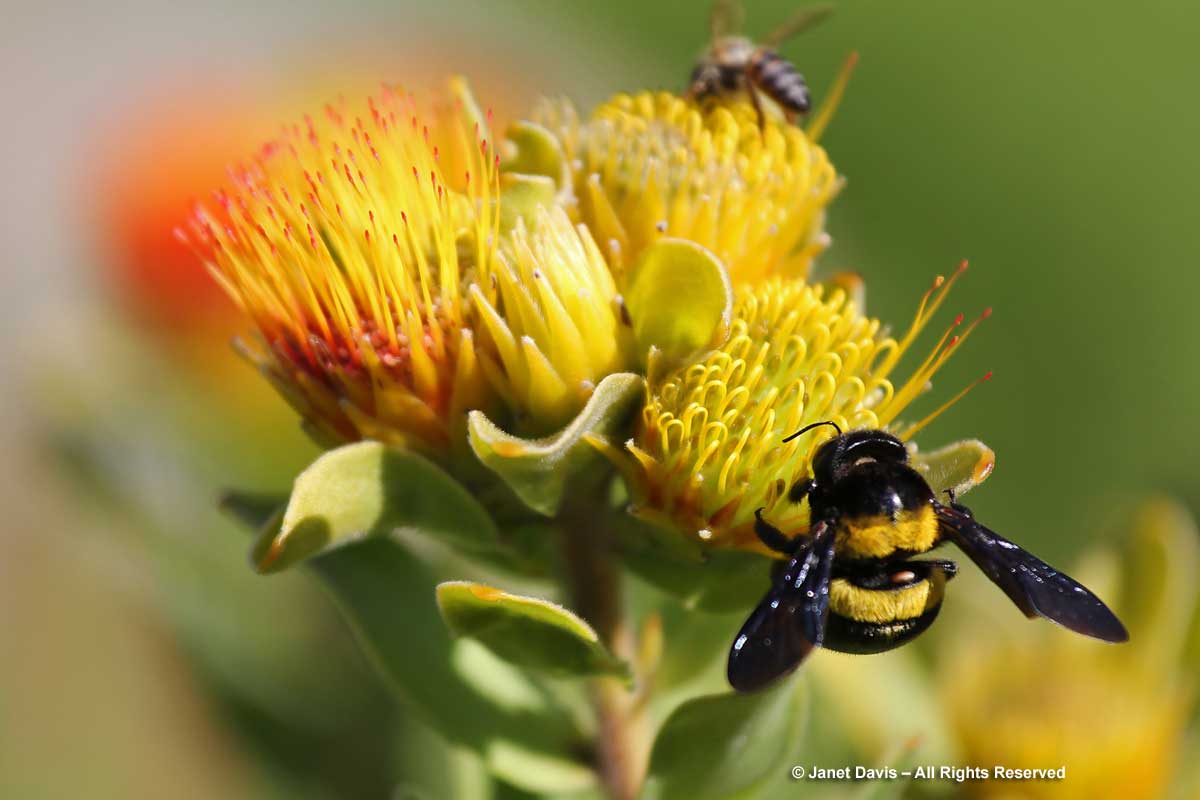 I wander the grounds for a few hours, then make my way through the flowery borders where typical Cape flora is informally arrayed, like this pretty combination of purple Felicia amelloides and yellow Cineraria saxifraga.
I wander the grounds for a few hours, then make my way through the flowery borders where typical Cape flora is informally arrayed, like this pretty combination of purple Felicia amelloides and yellow Cineraria saxifraga.
There’s just enough time before I have to depart to visit Kirstenbosch’s wonderful little Conservatory.
Inside are rare plants like this Hoodia parviflora, now used as a (scientifically-proven!) diet supplement.
And this lovely Petalidium coccineum.
Finally, it’s time to call the taxi and head back to my Cape Town hotel. But I’ll take away beautiful memories (and tons of photos) of this gorgeous garden – moments like this lovely vignette, of the beautiful blue Cape hyacinth (Merwilla plumbea) with ‘Mandela’s Gold’ bird-of-paradise…..
….and the magical sight of the afternoon sun shimmering through the pale bracts of the king protea.
Farewell Kirstenbosch. I hope to return one day.

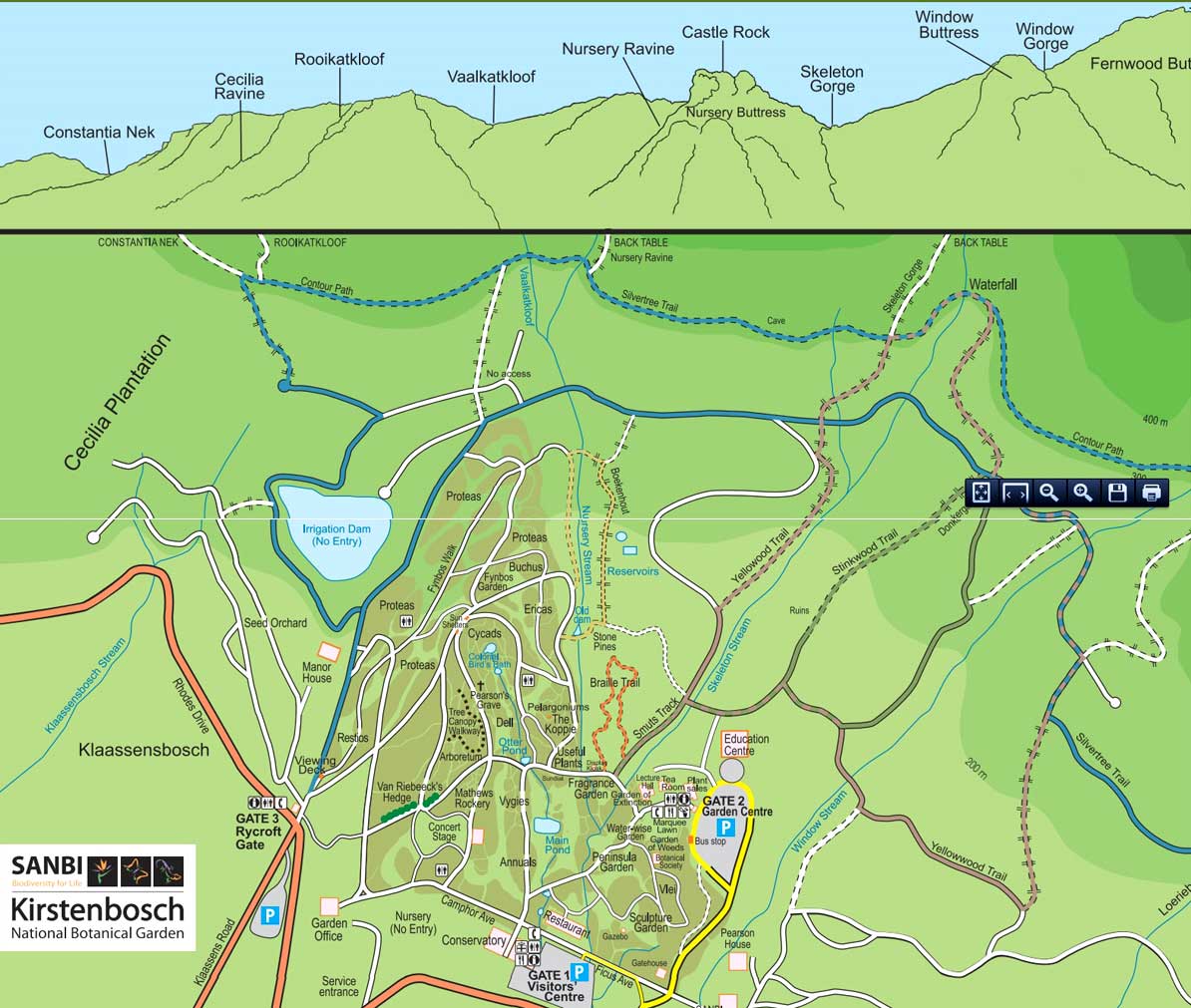
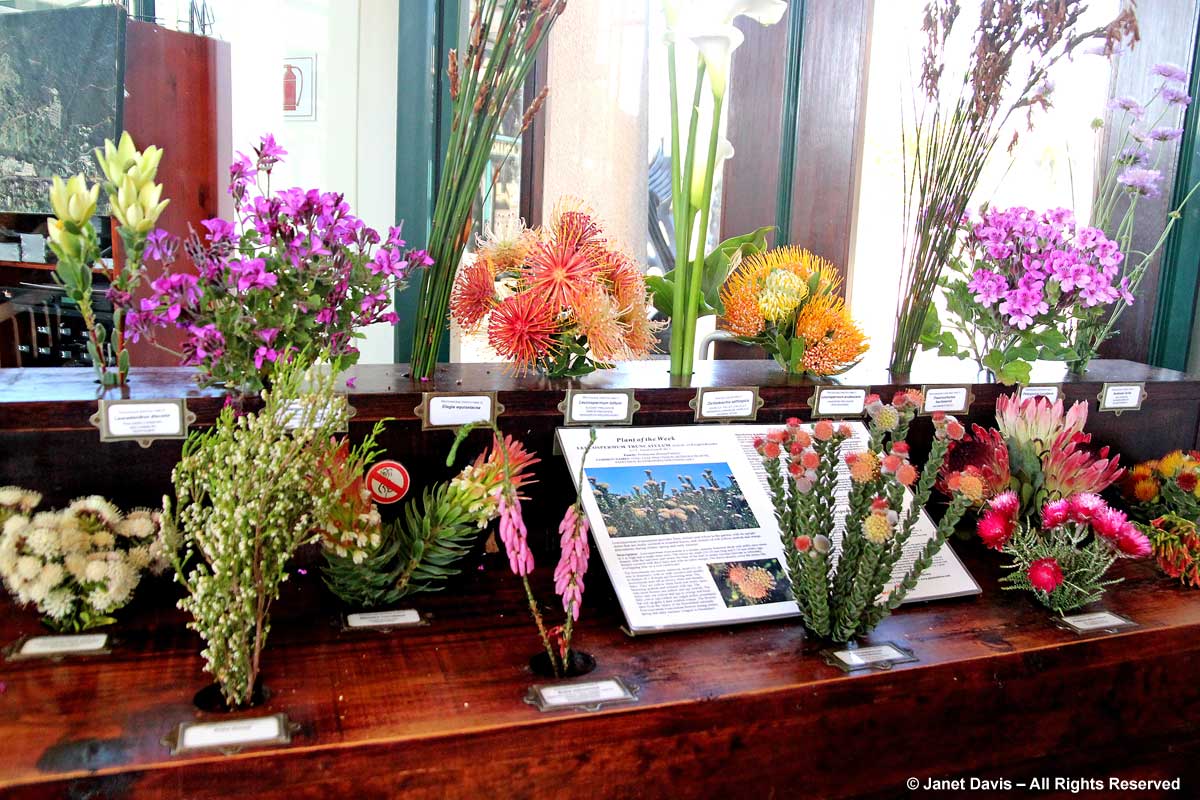
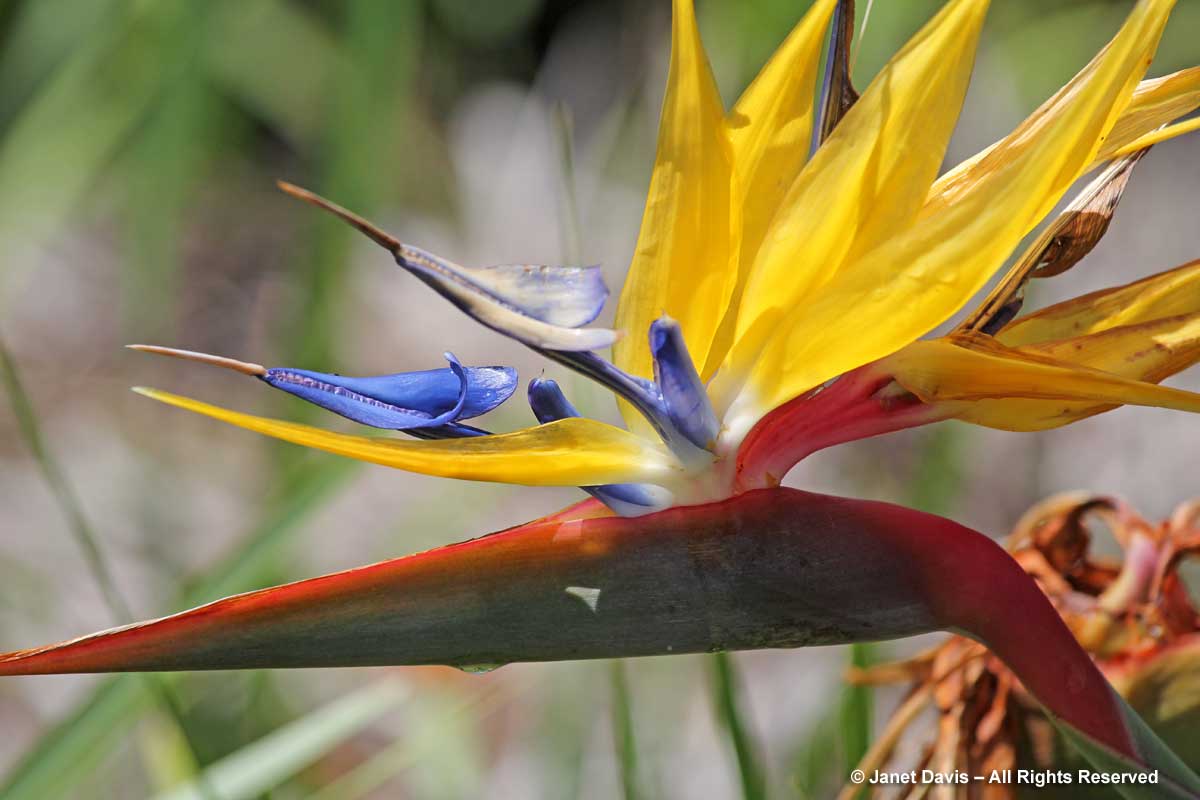
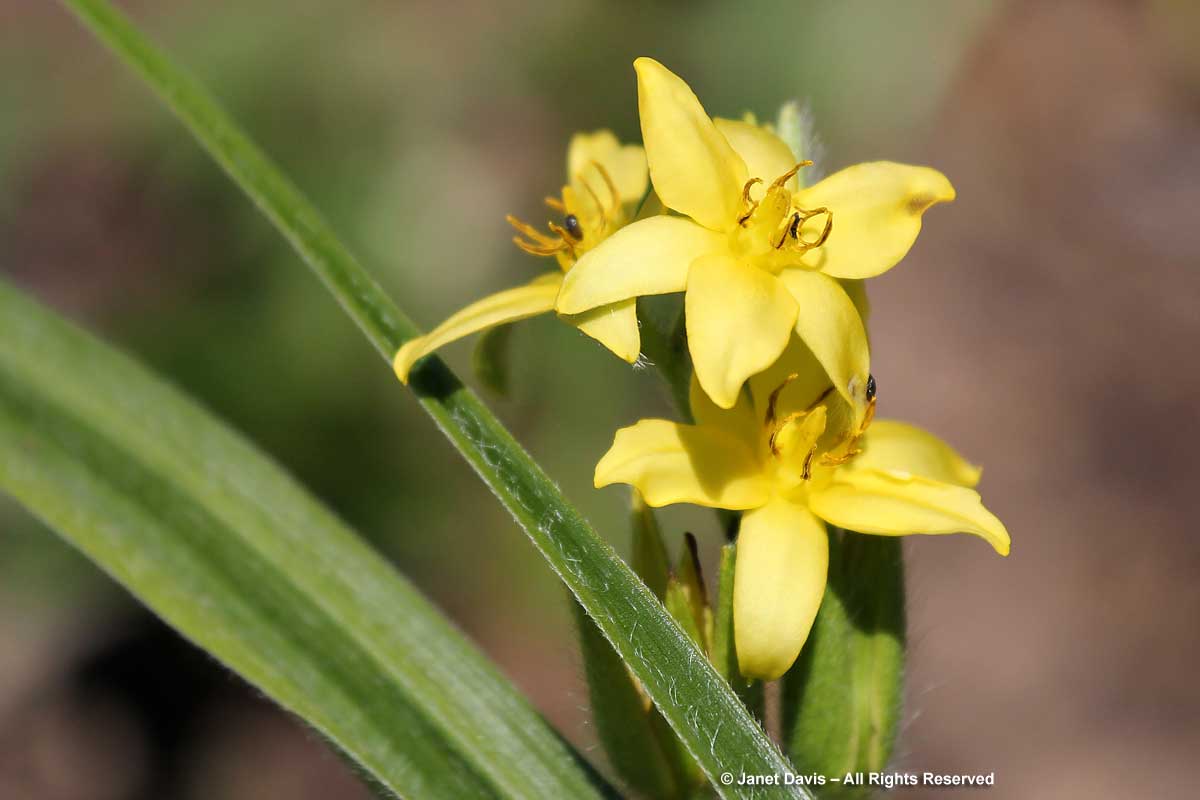
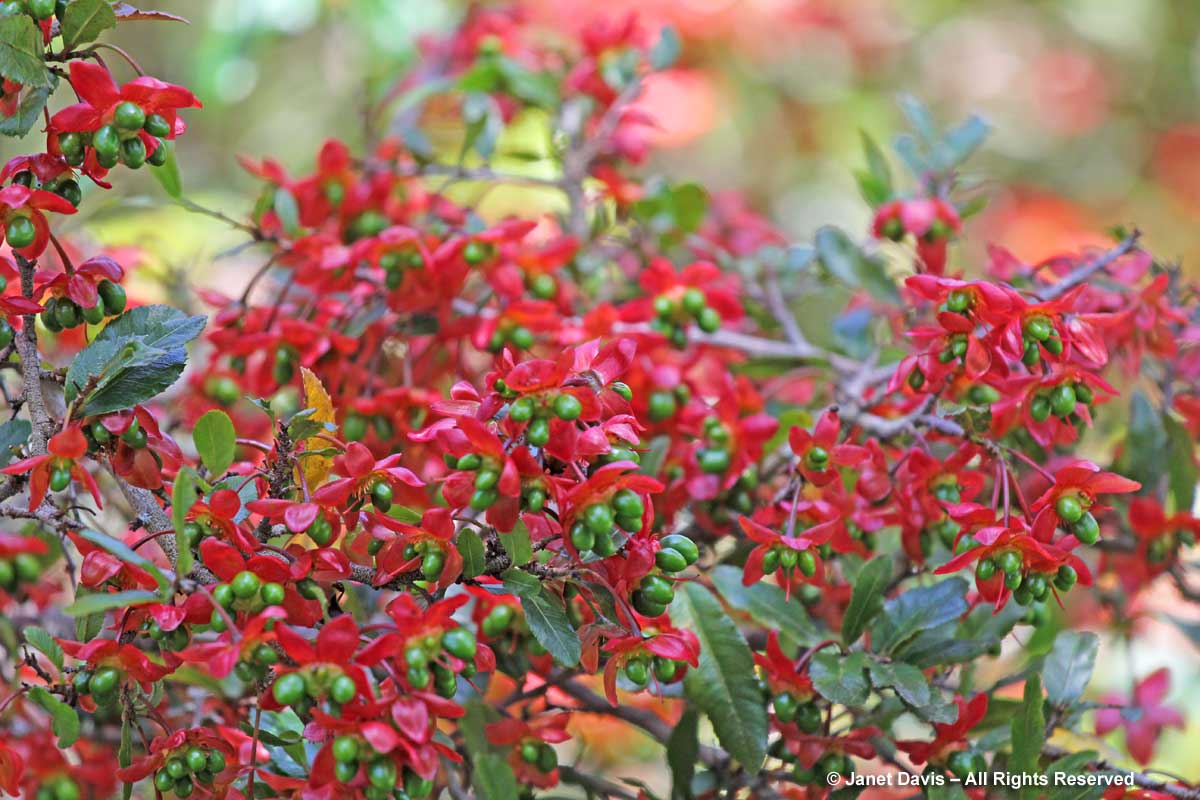
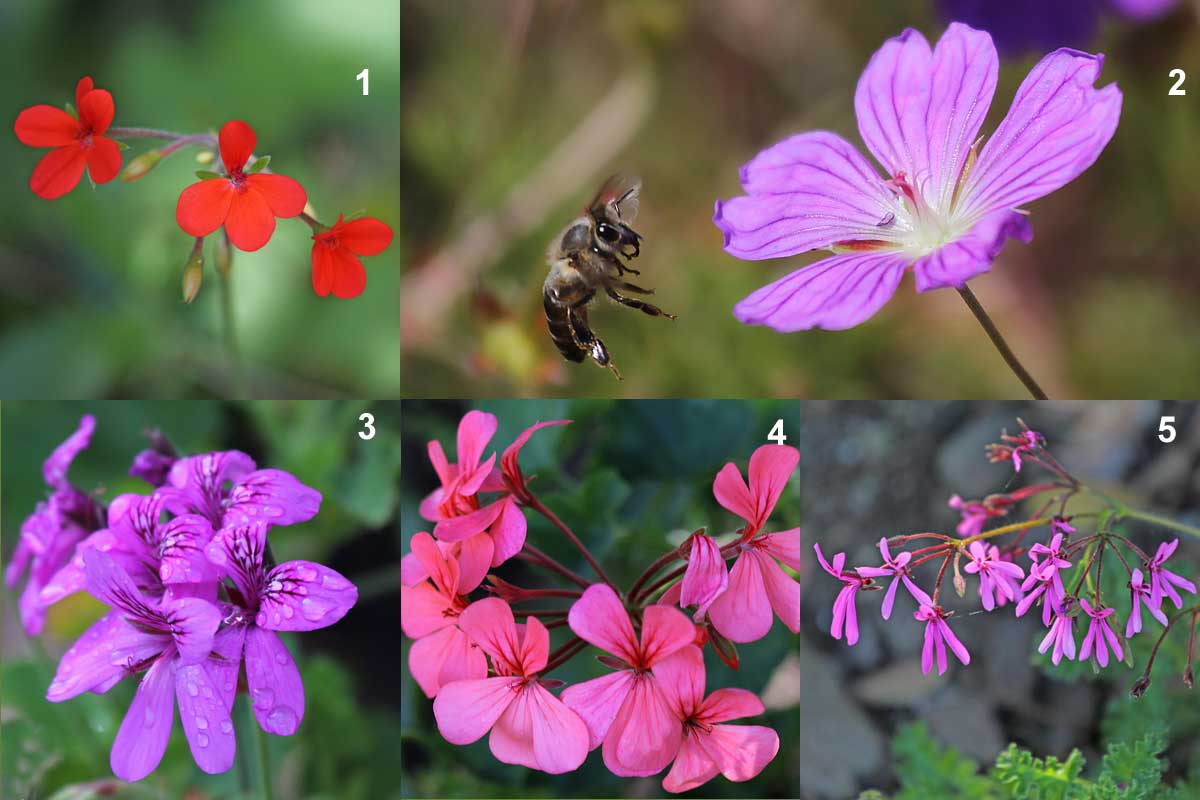
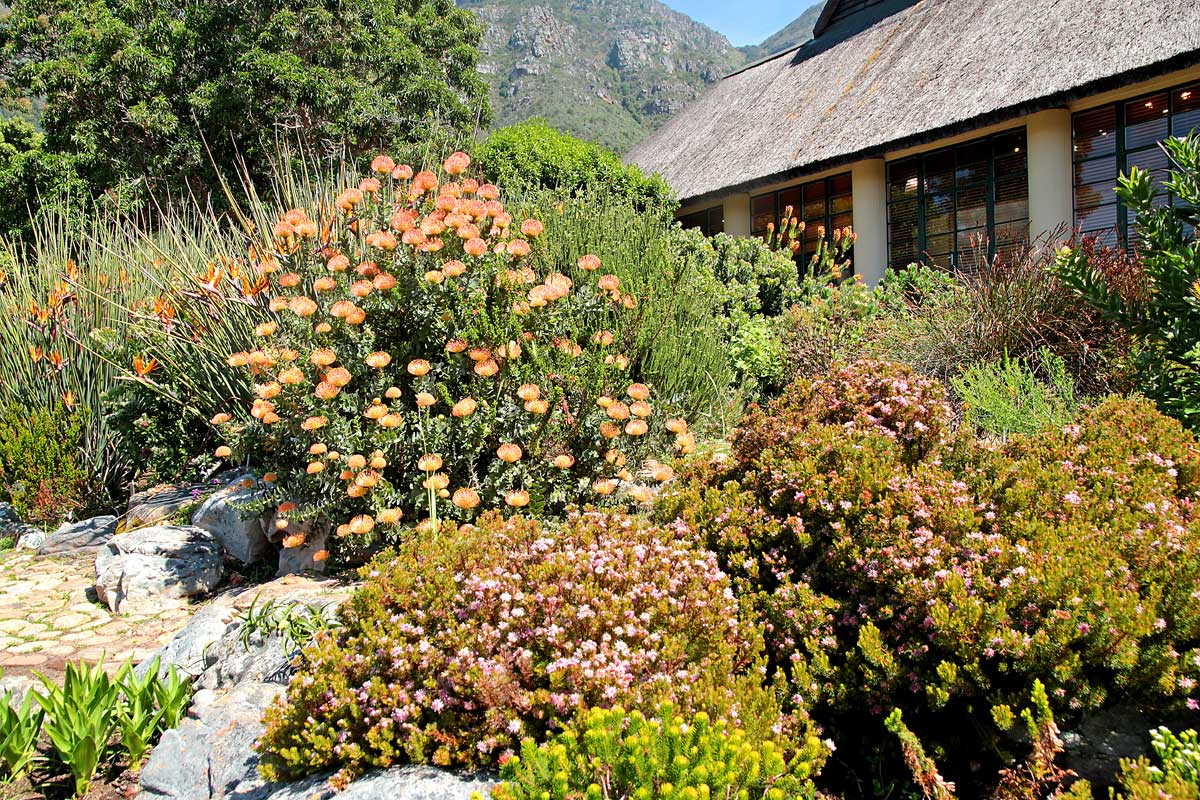
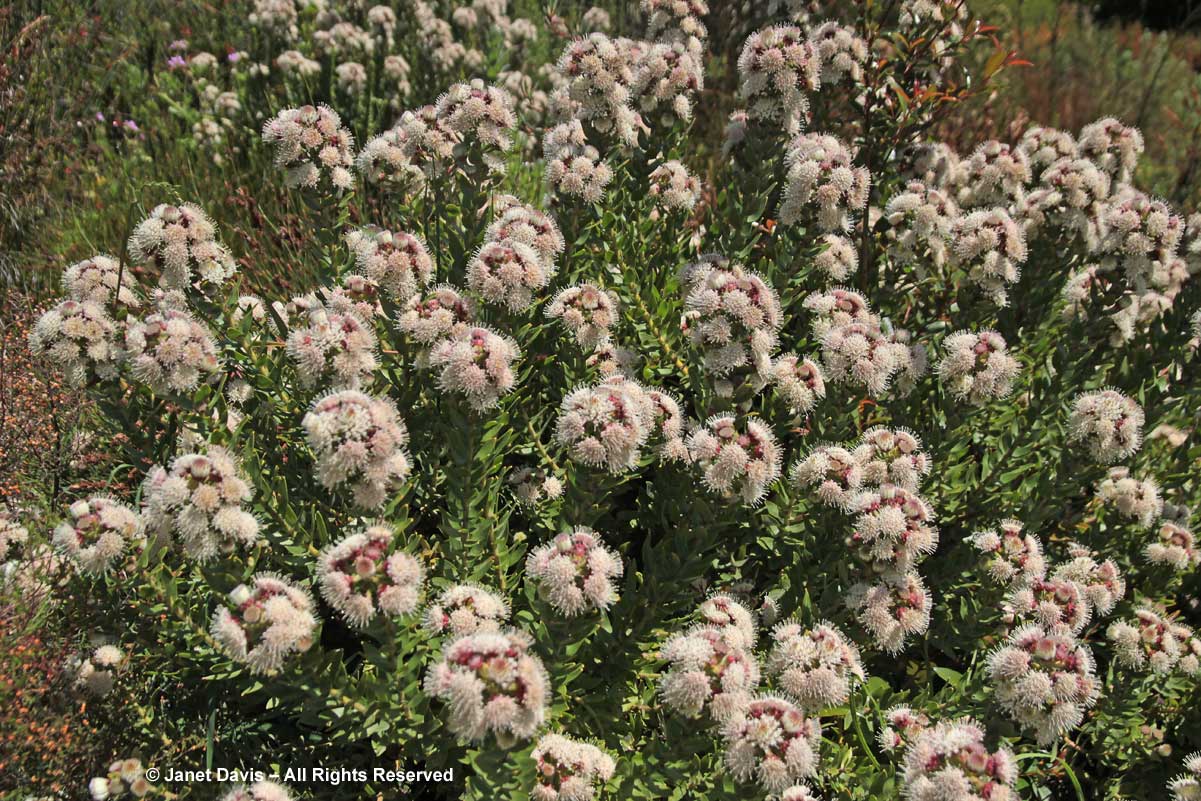
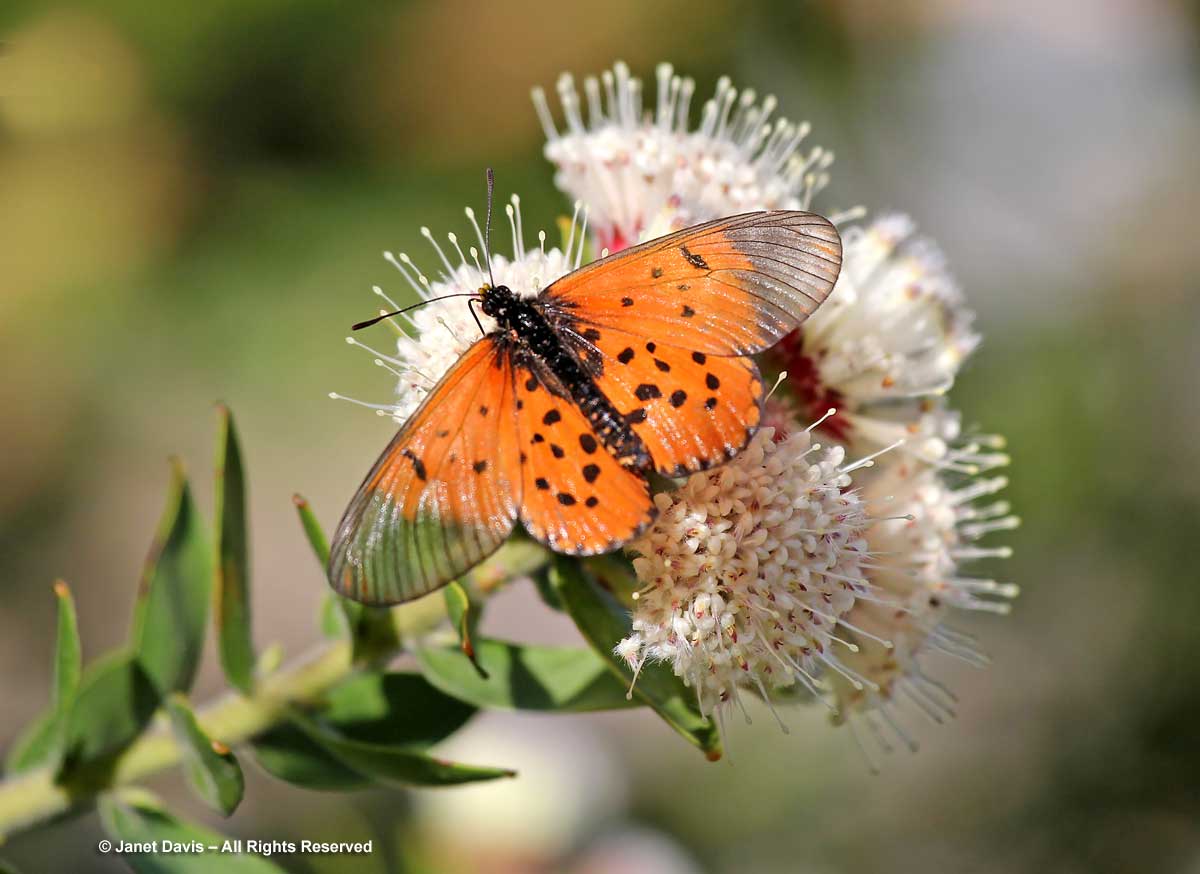
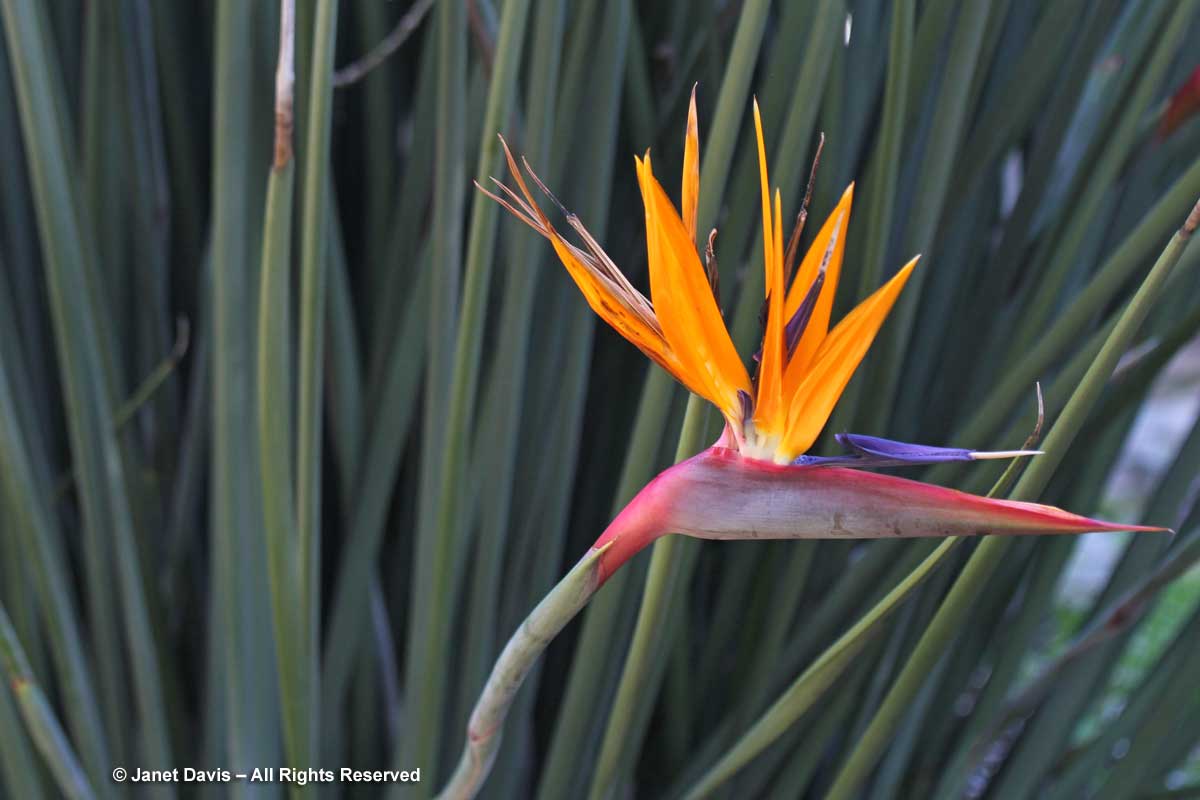
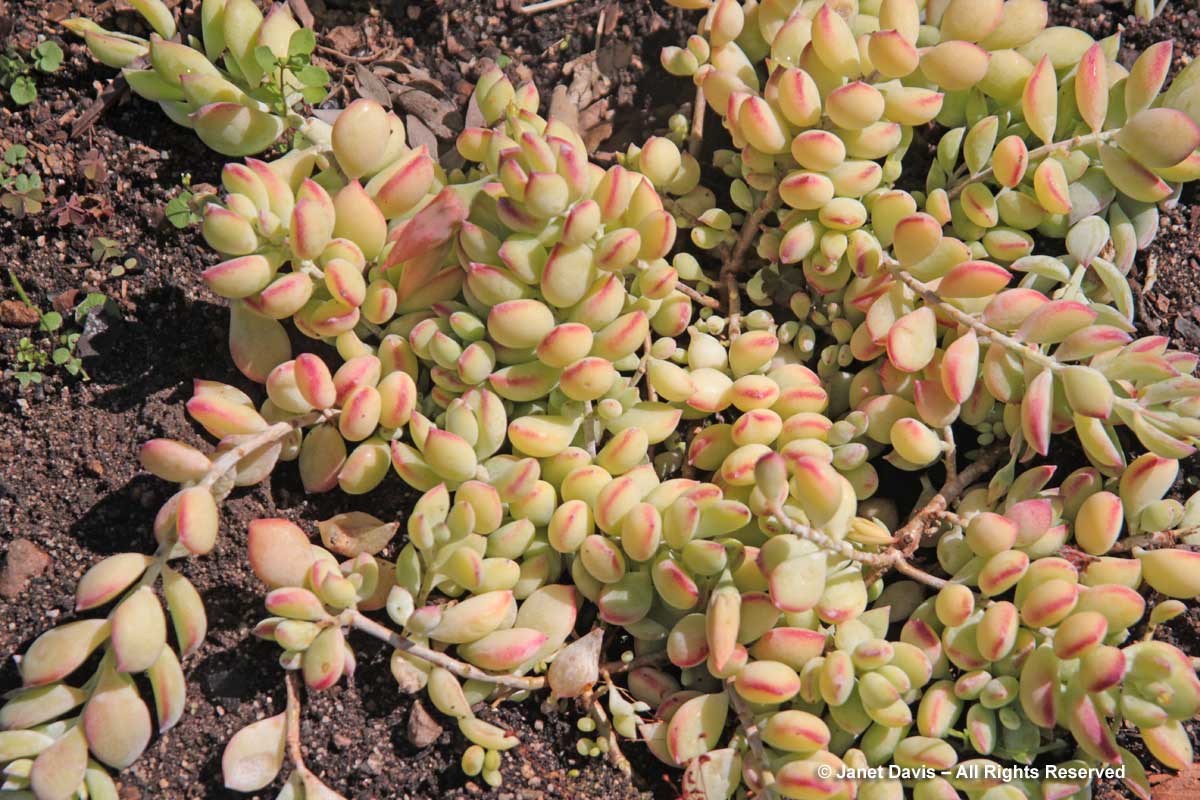
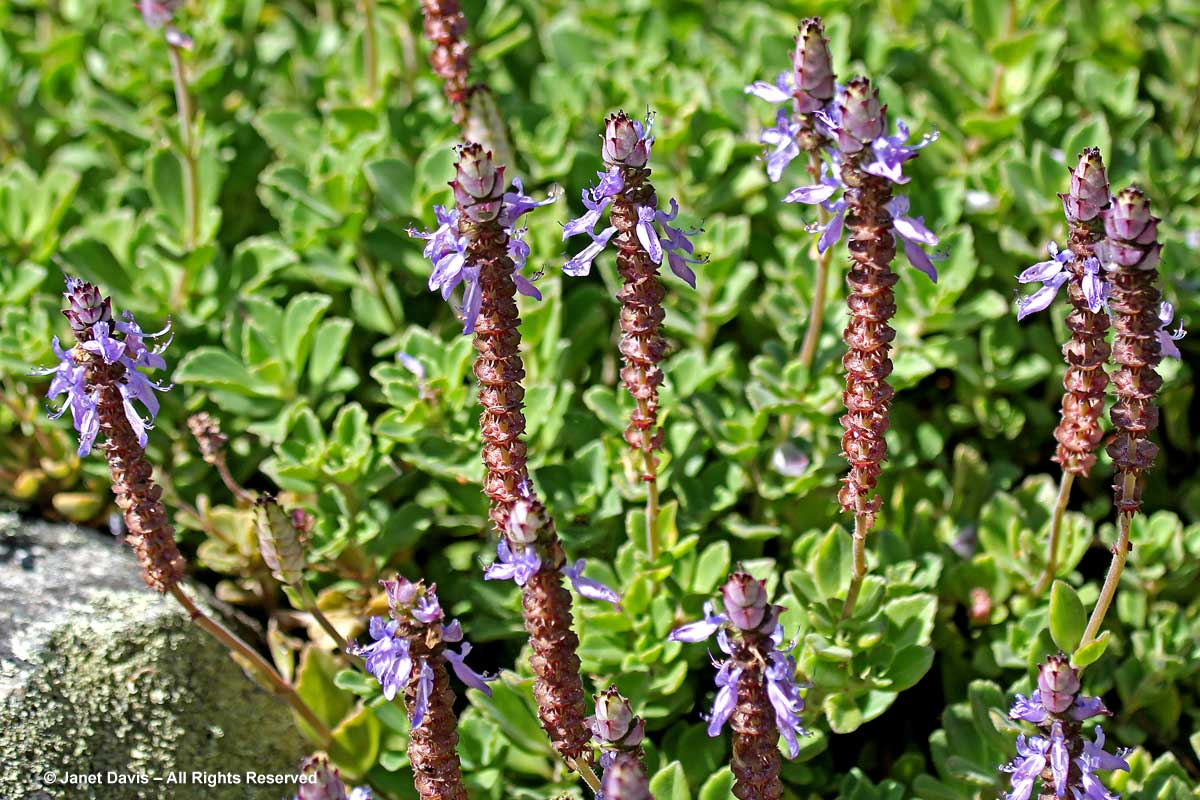
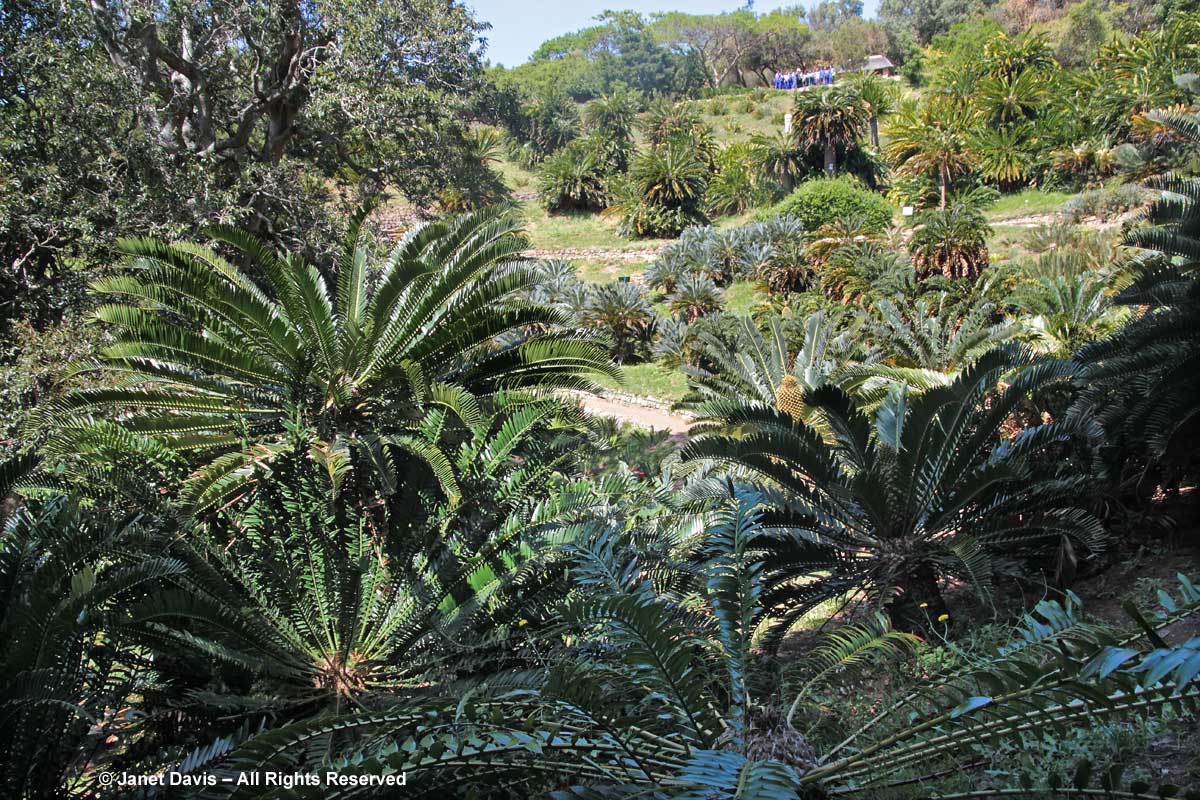
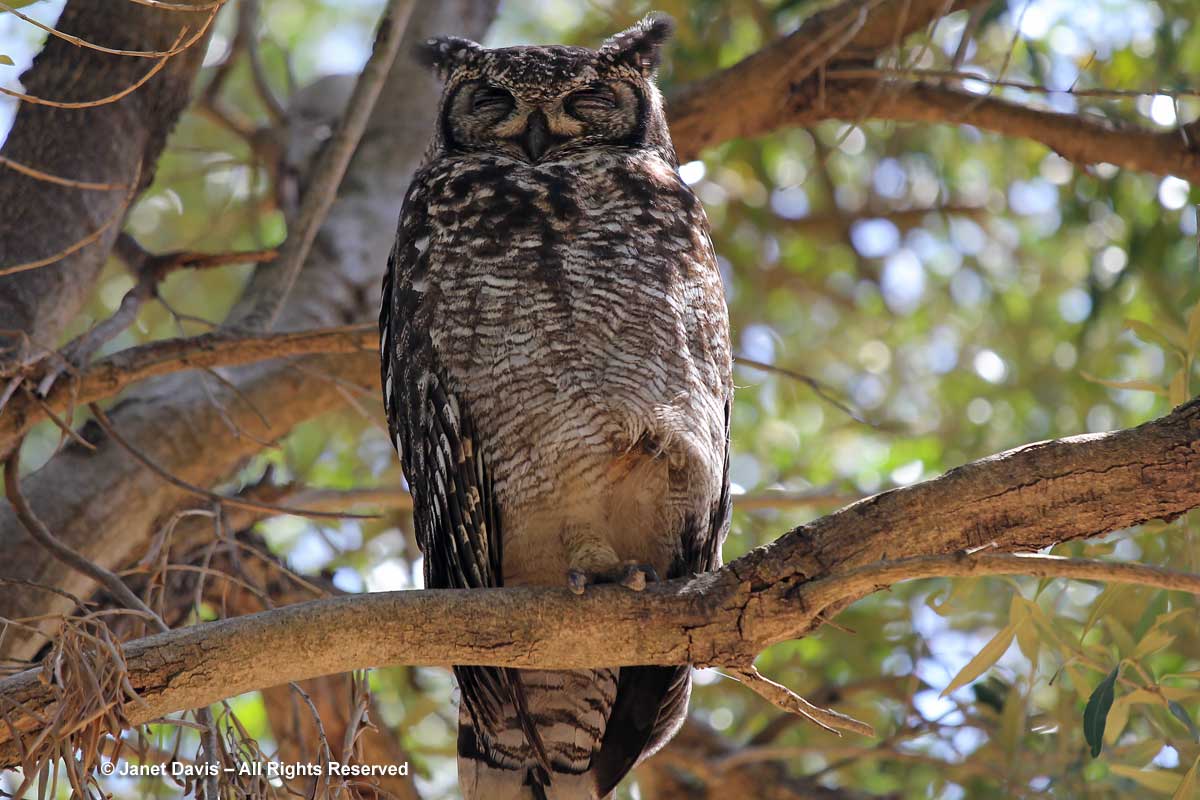
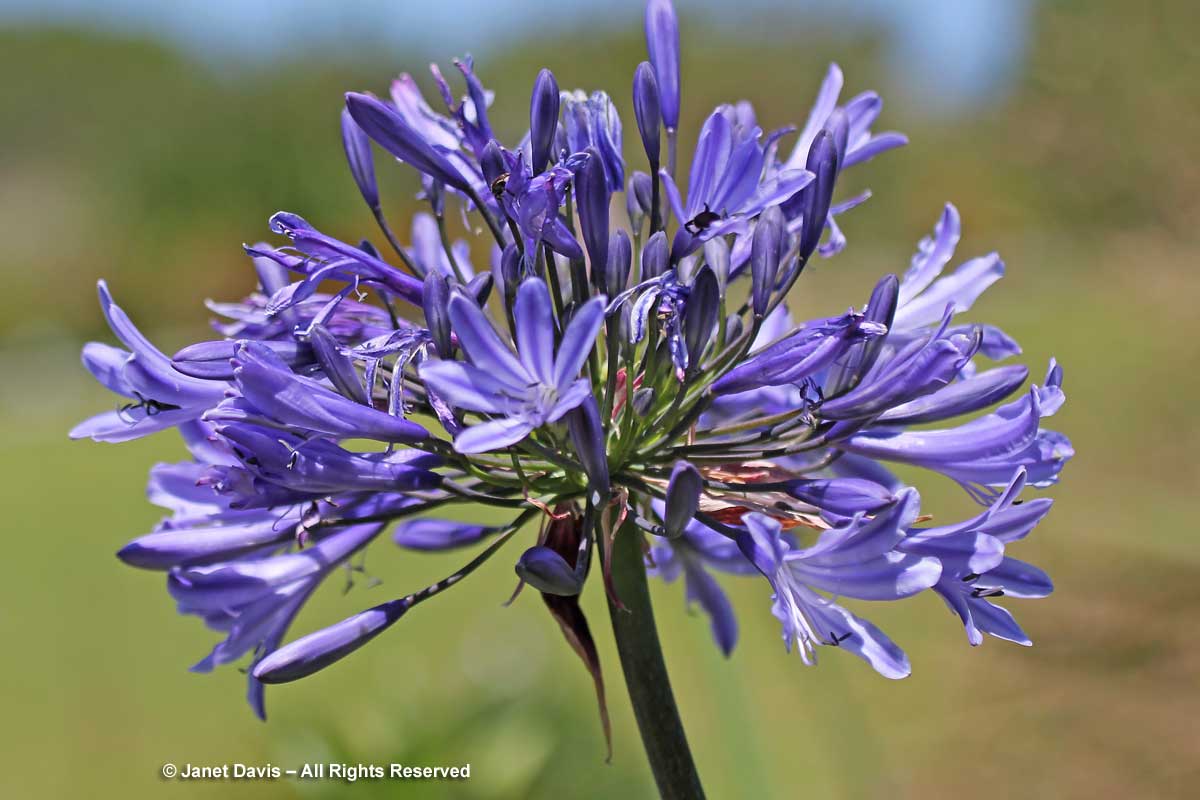
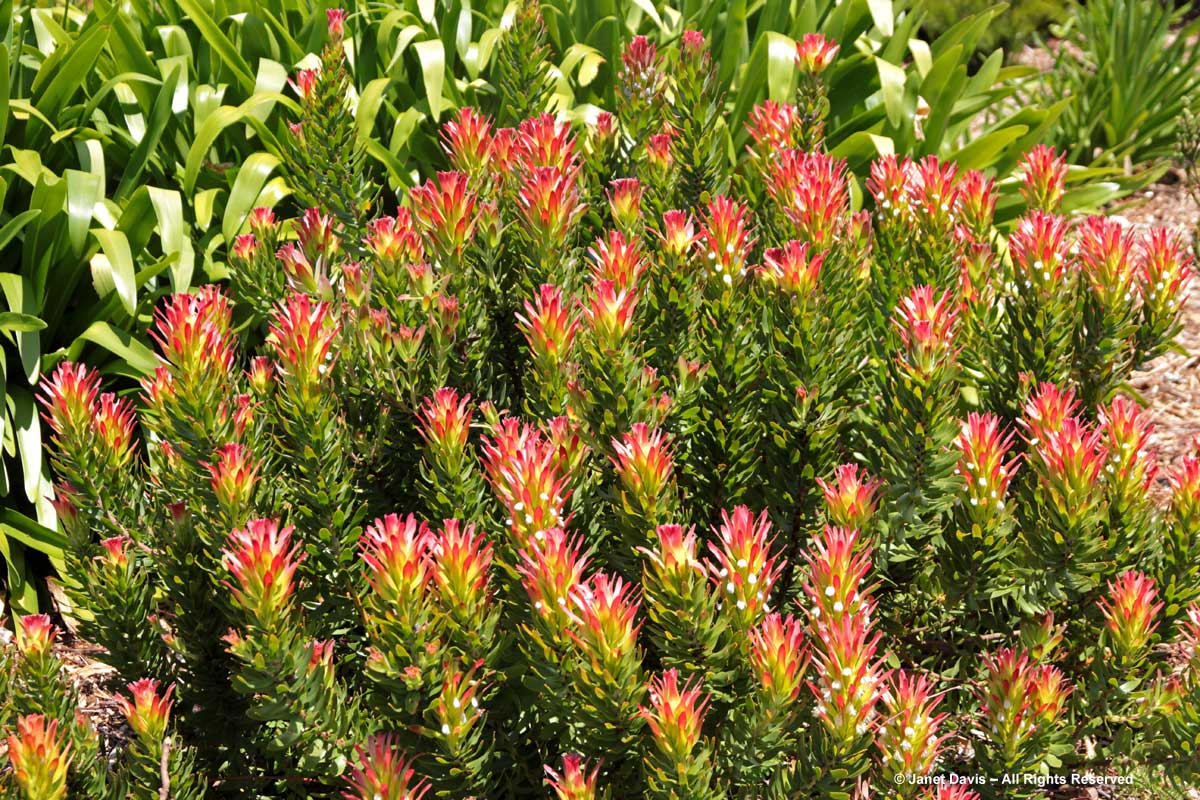
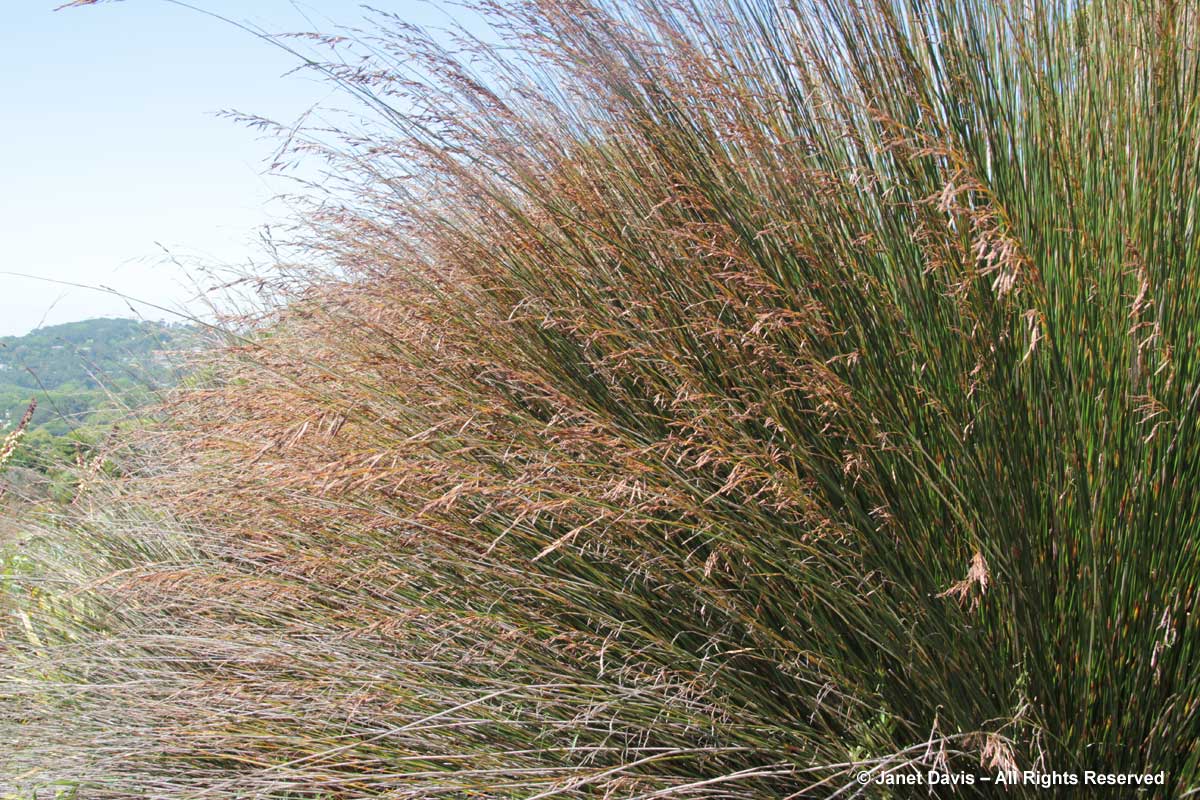
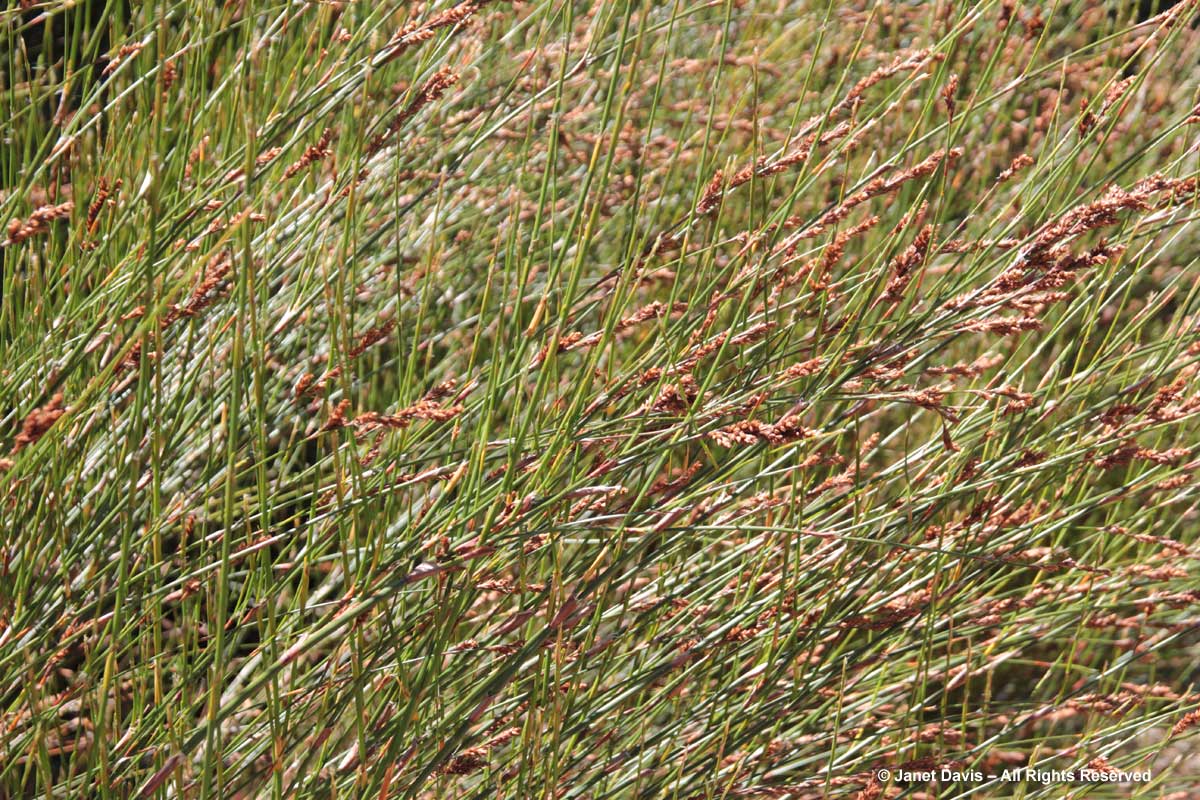
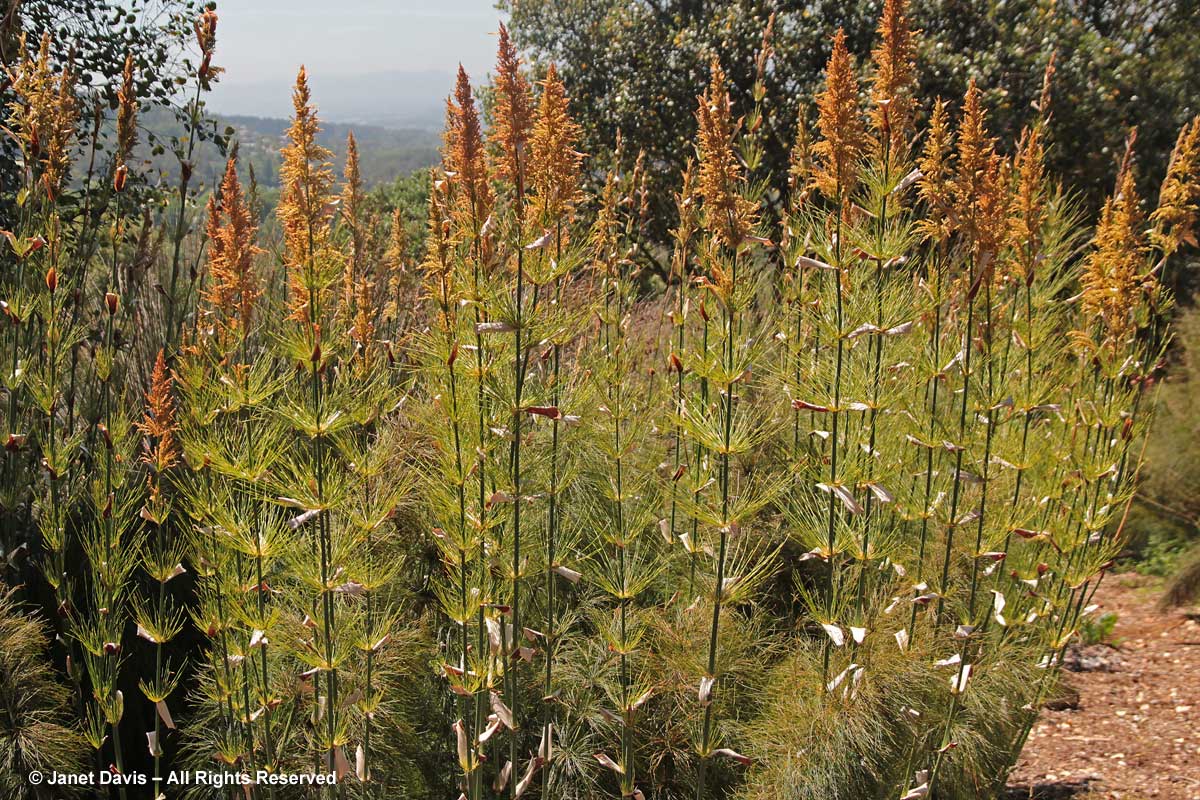
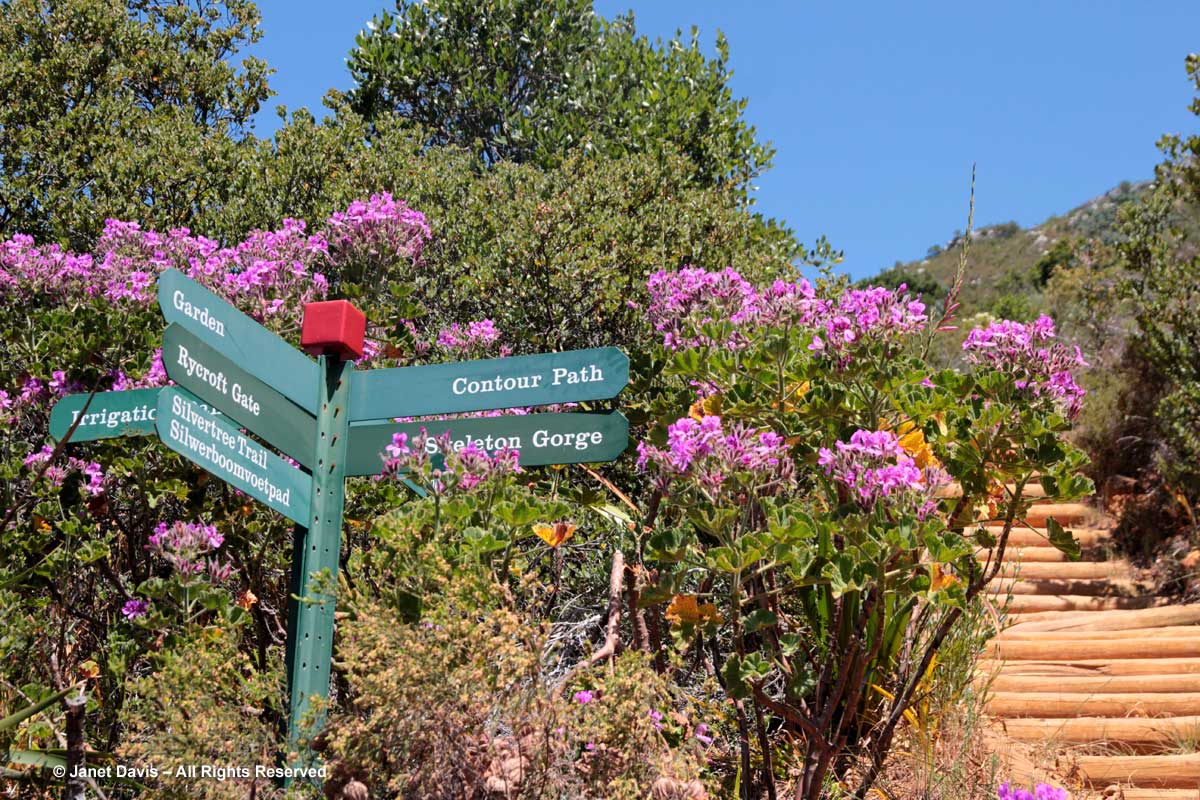
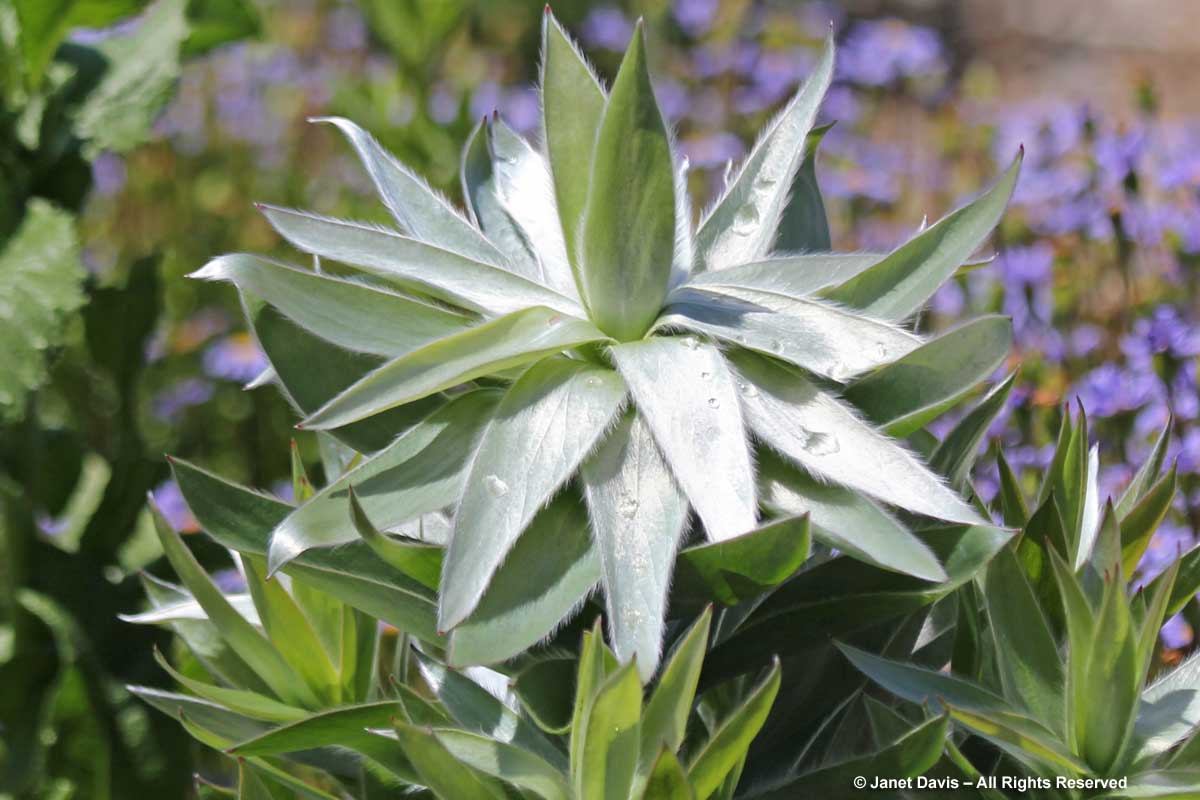
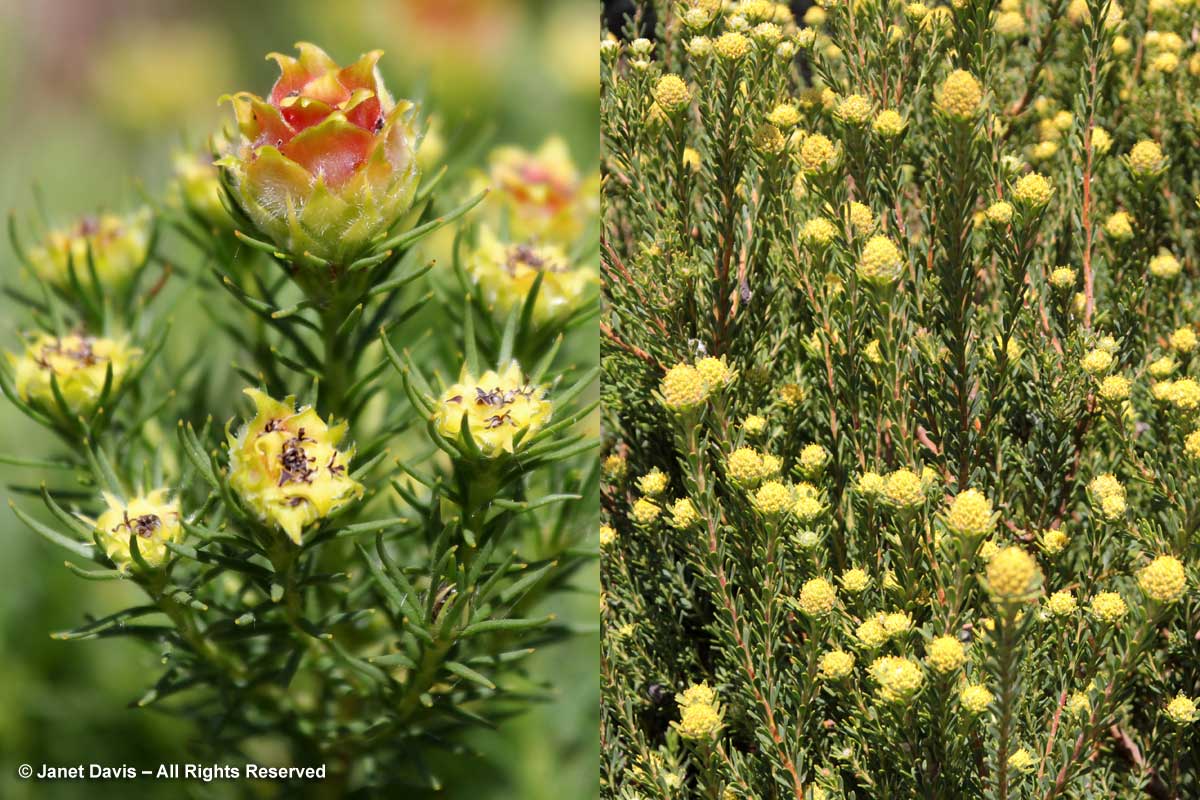
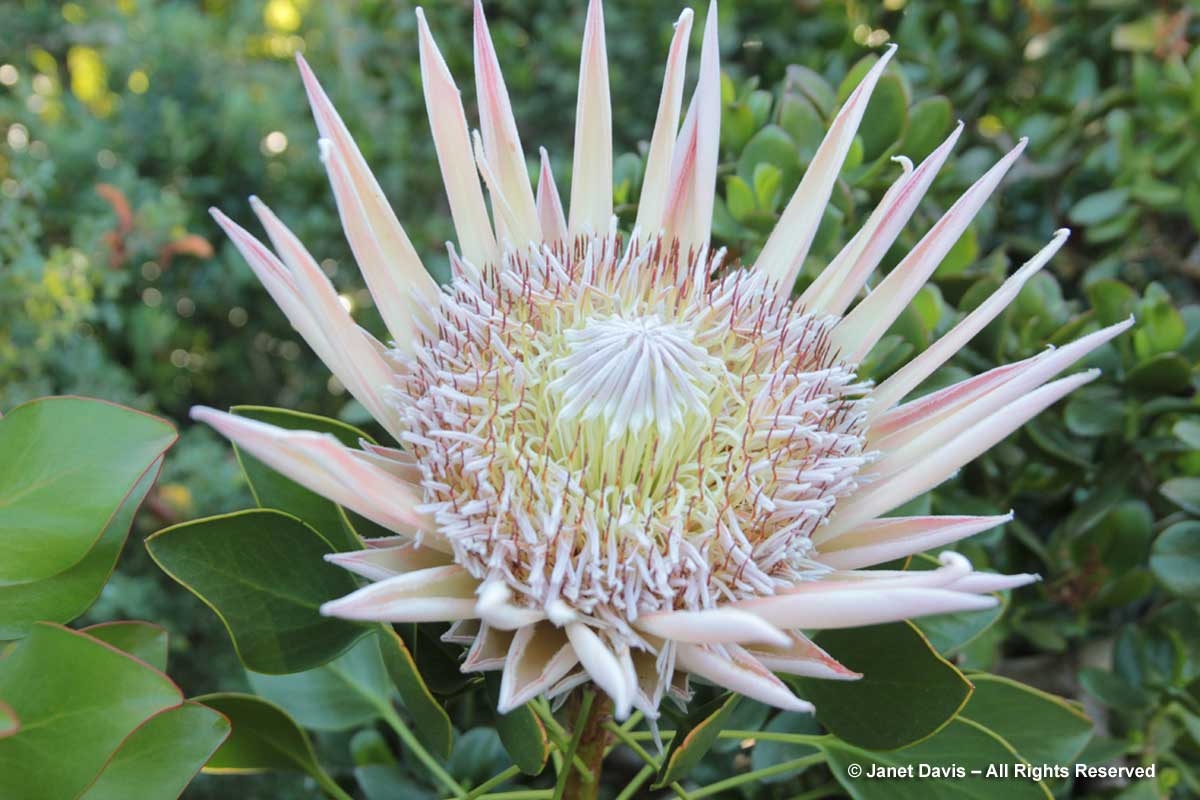
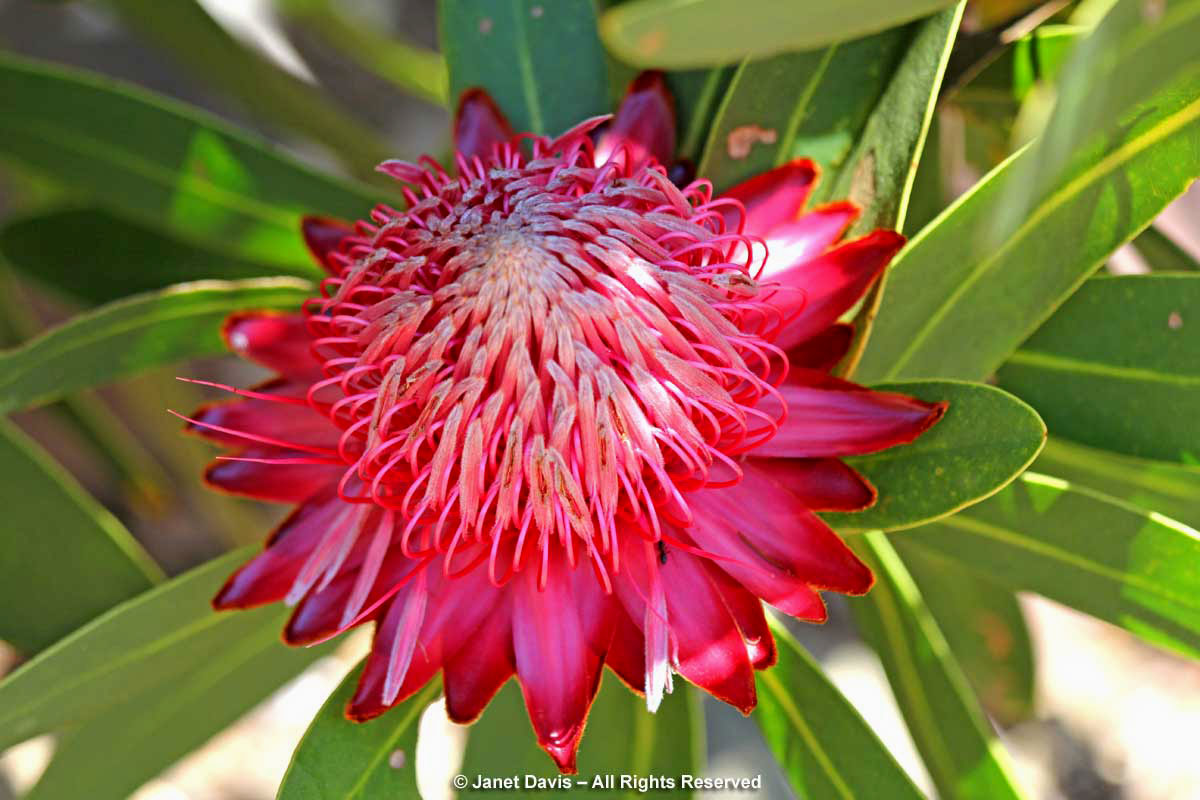
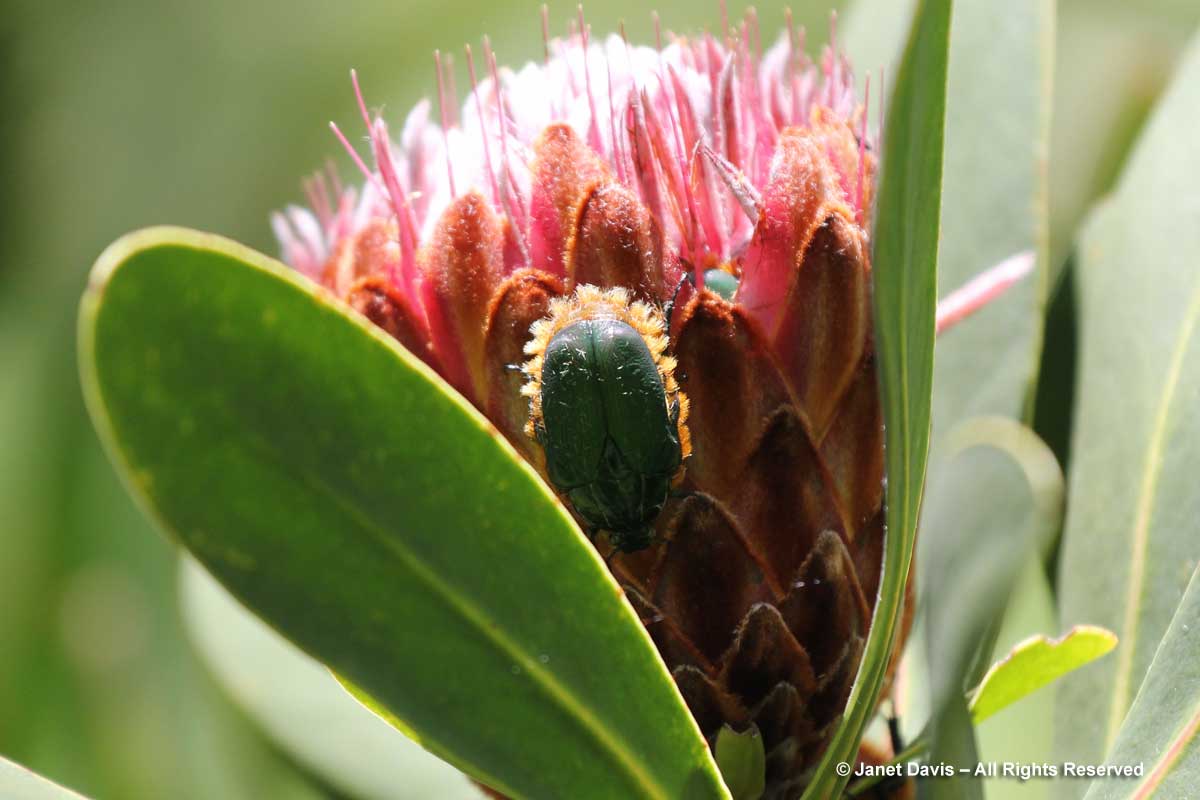
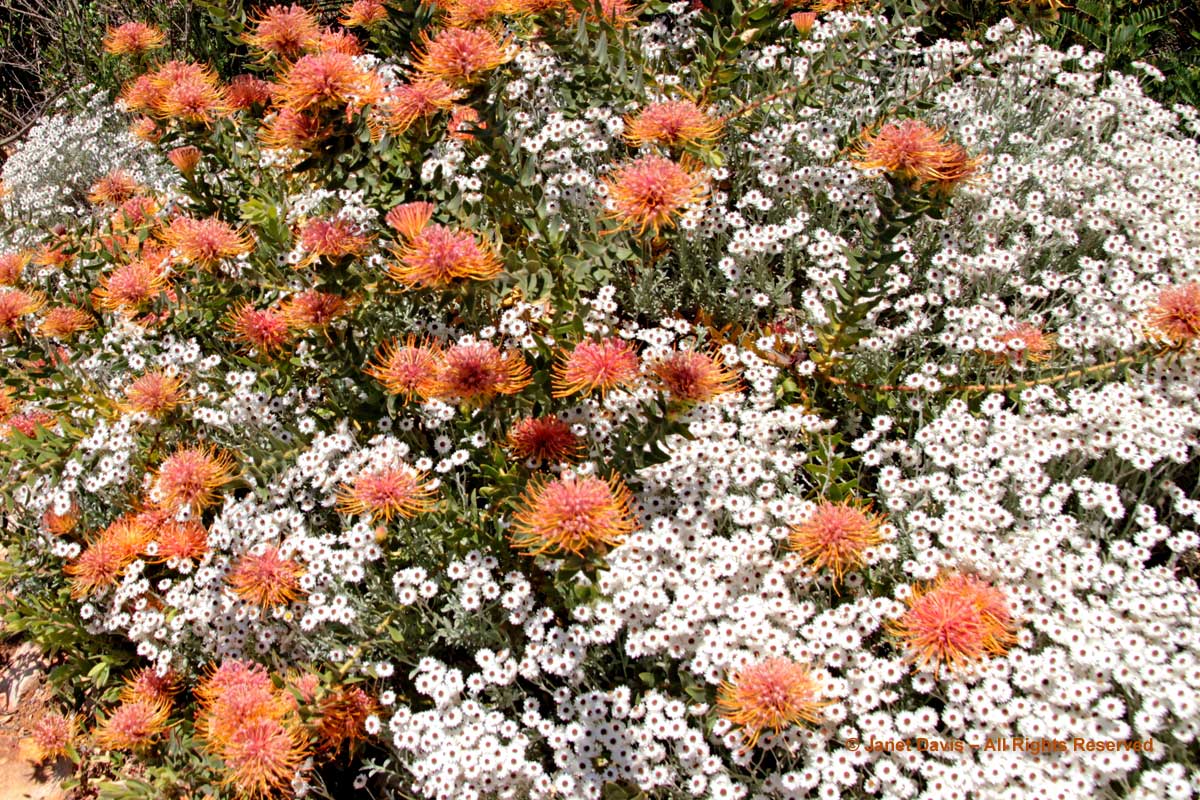
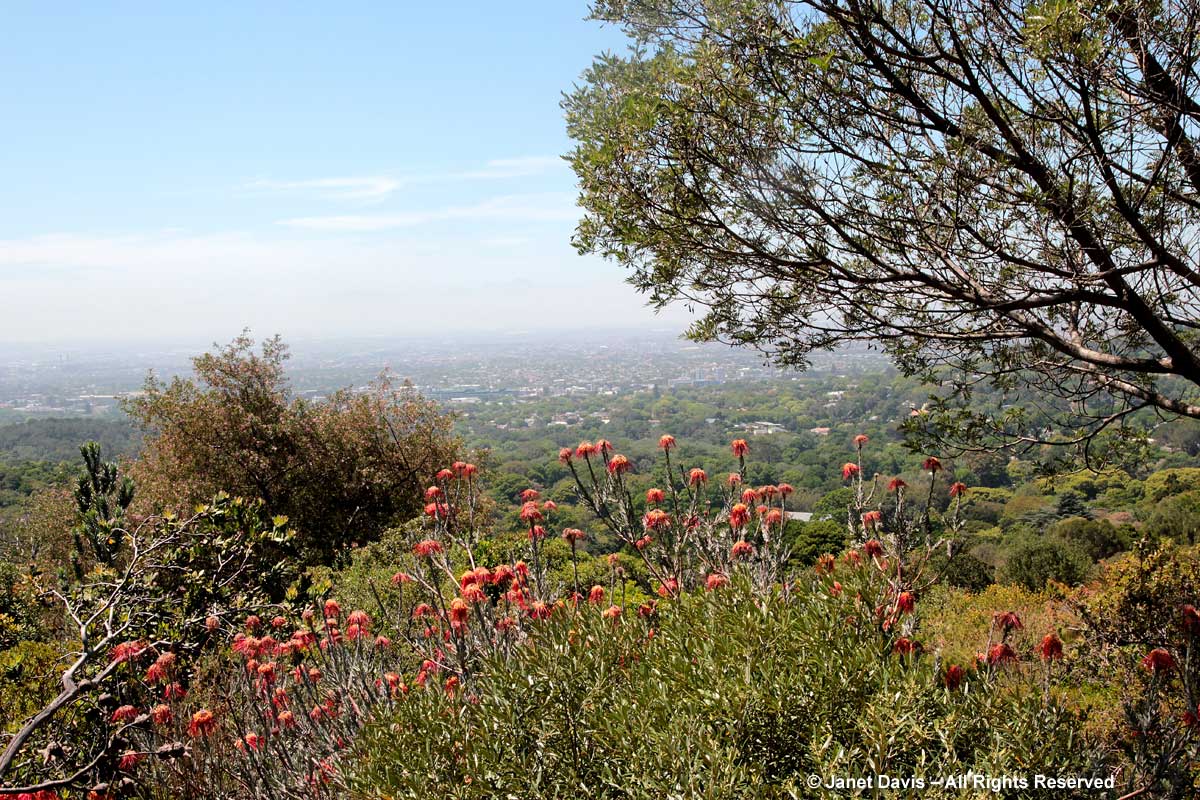
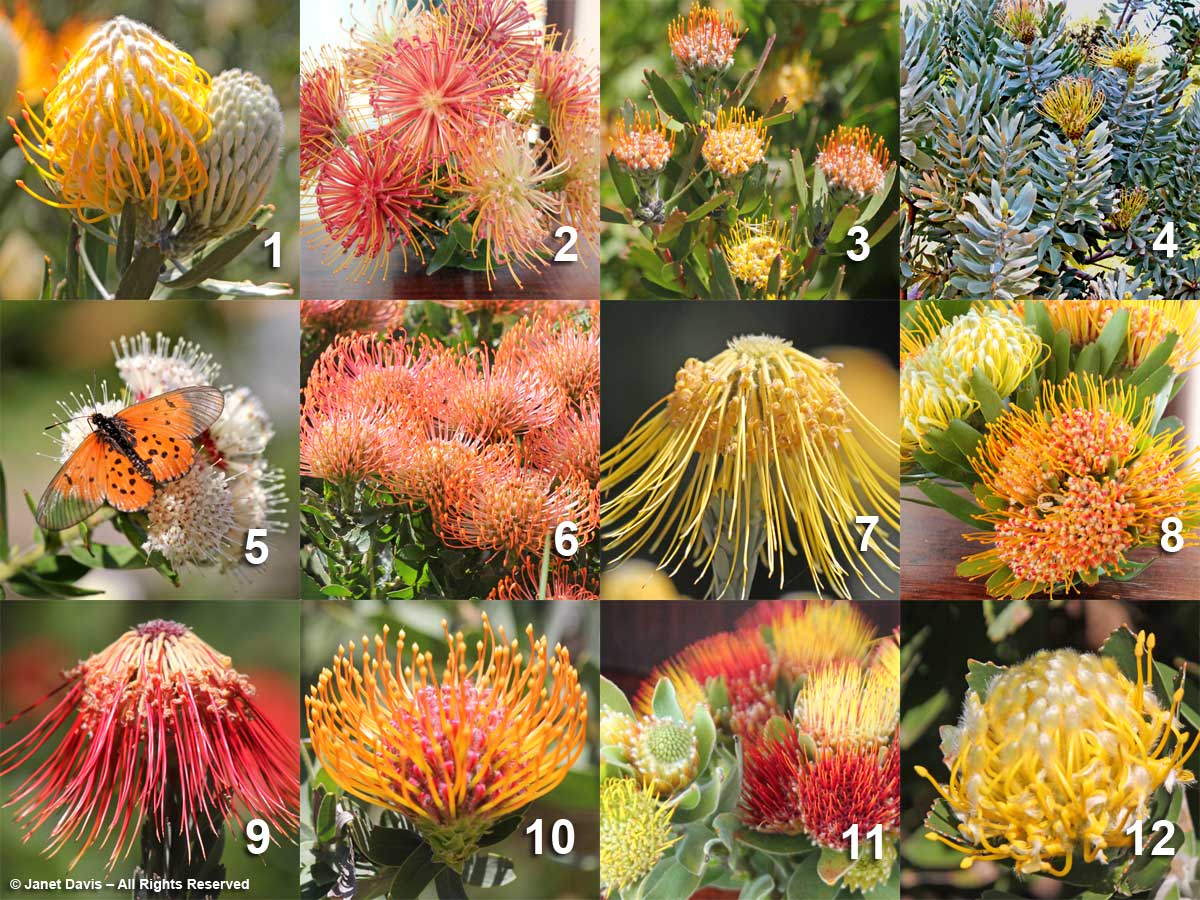
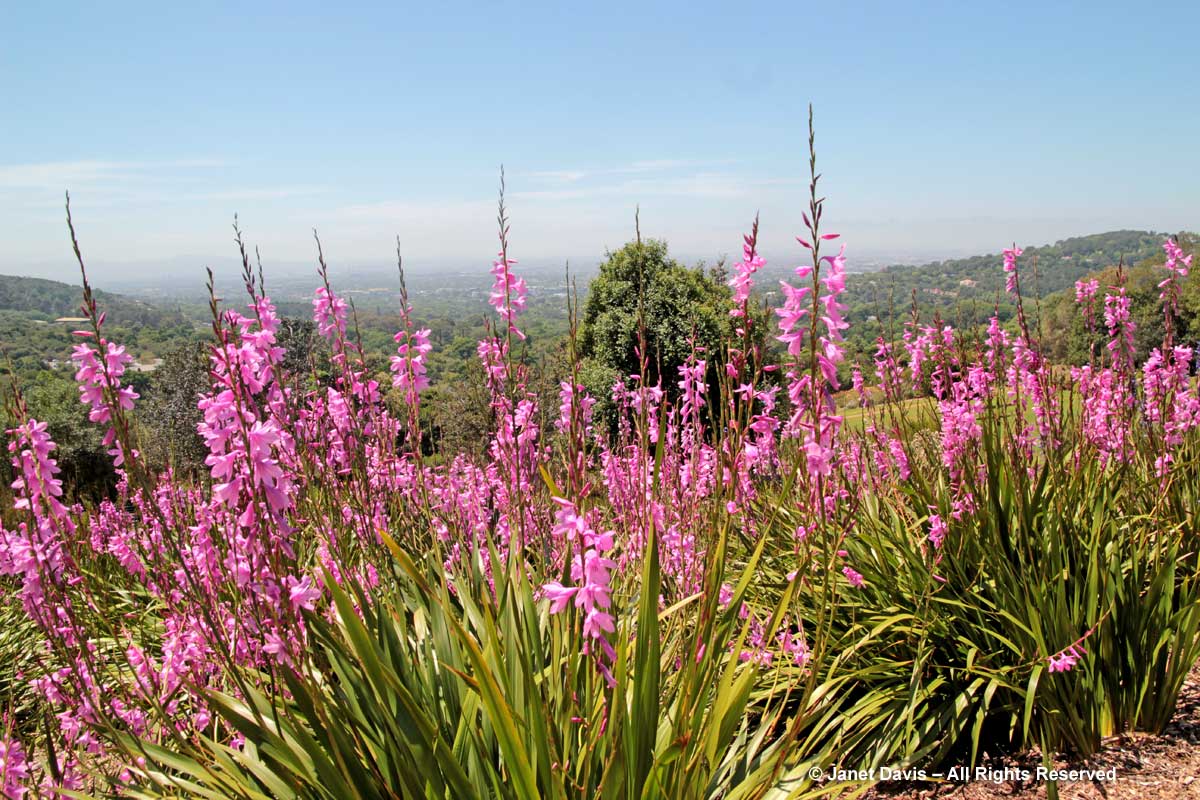
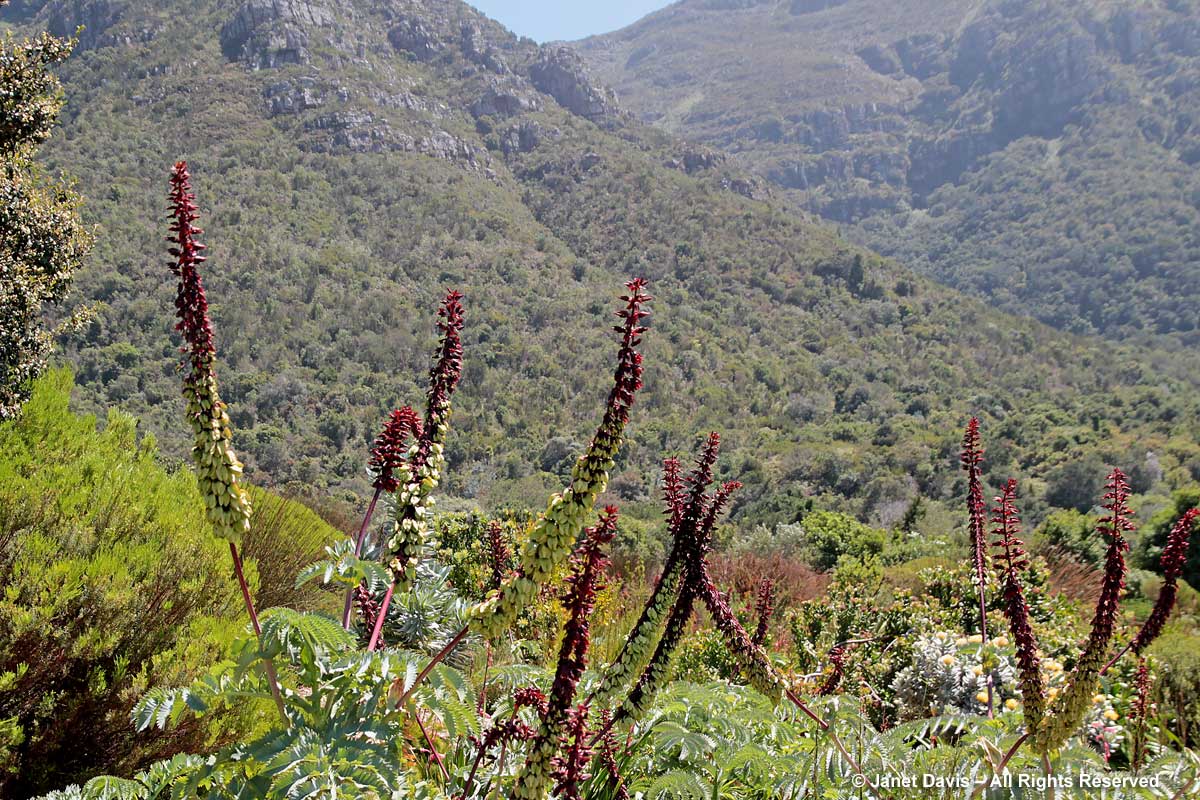
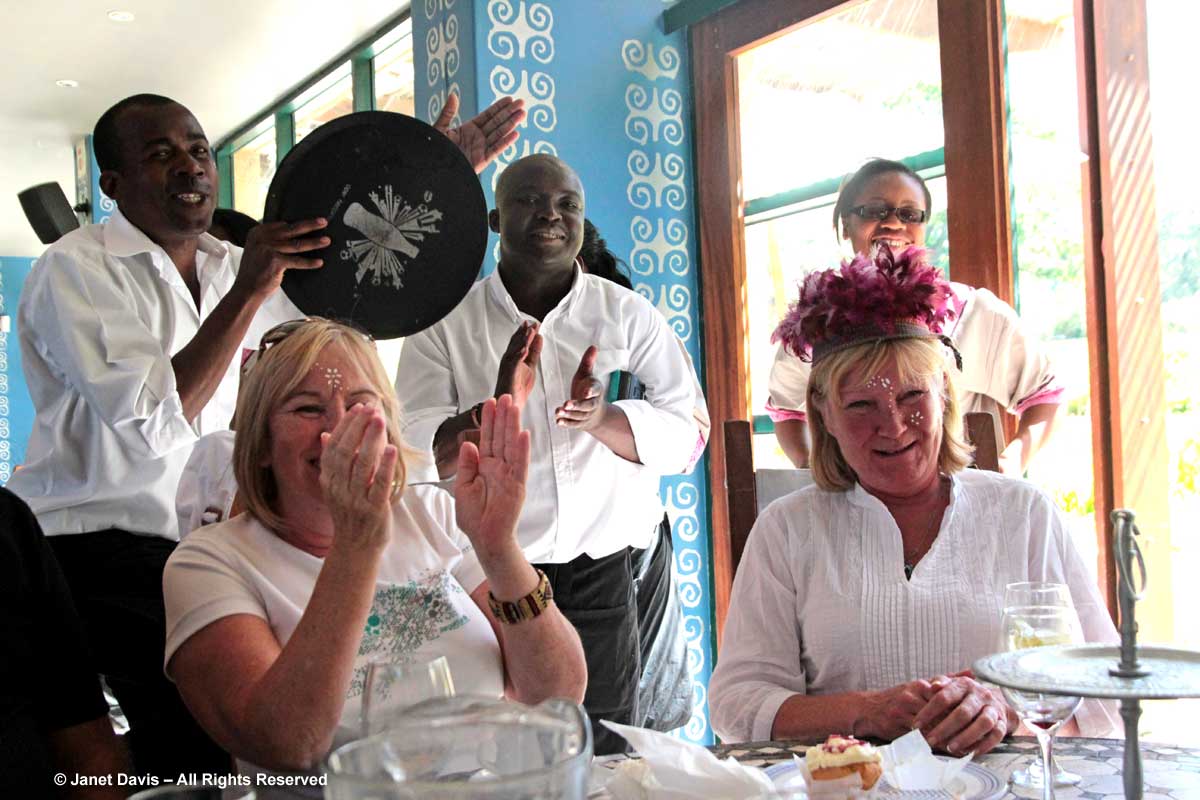
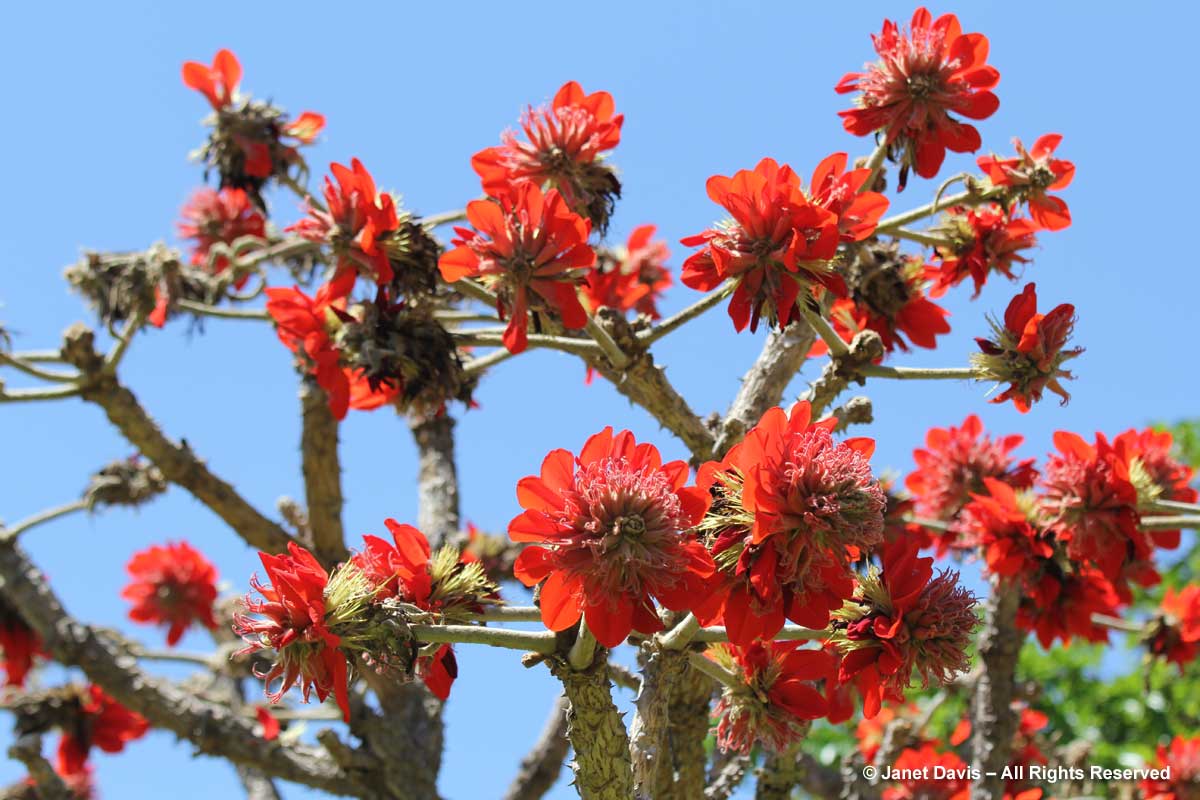
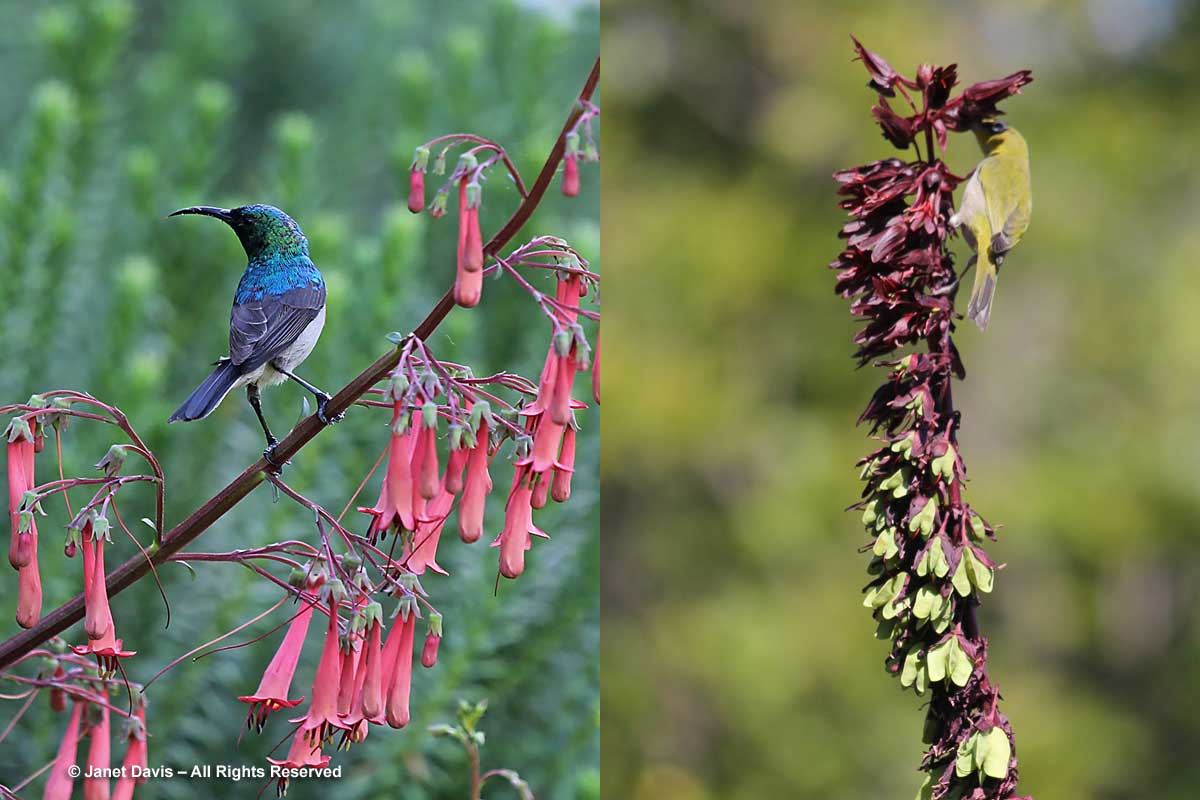
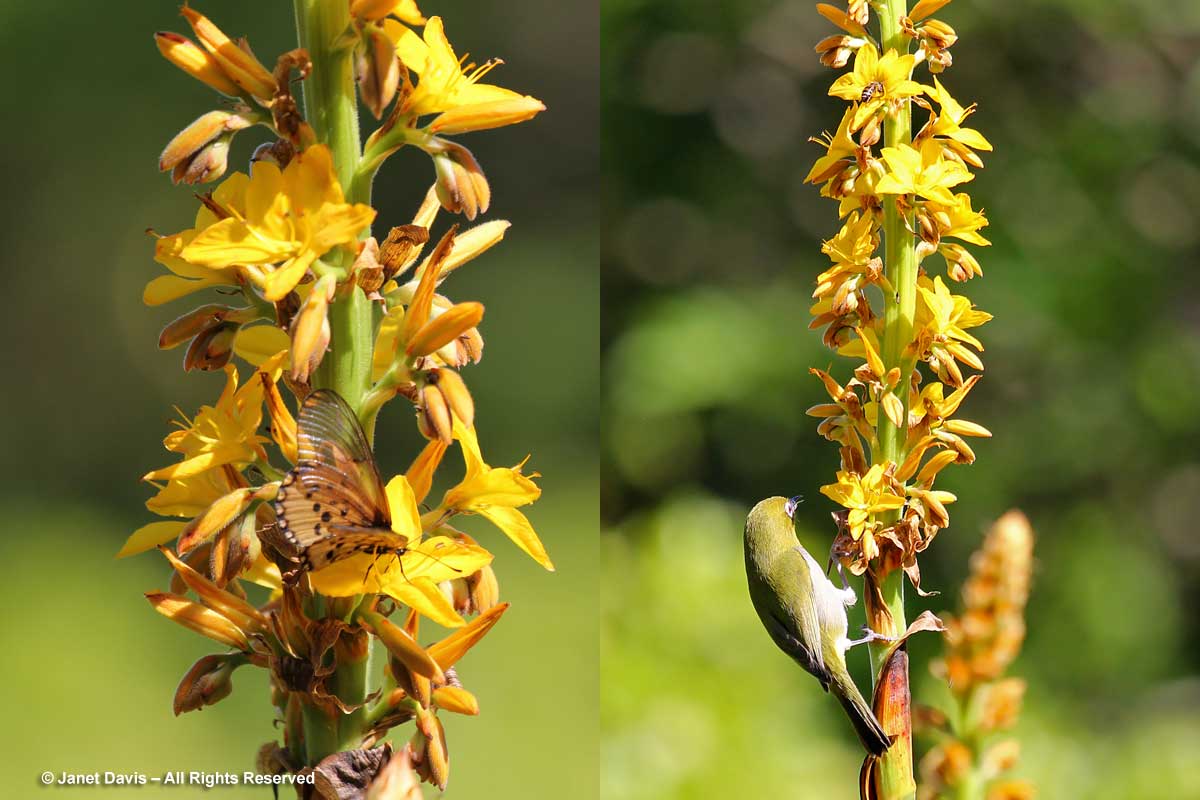
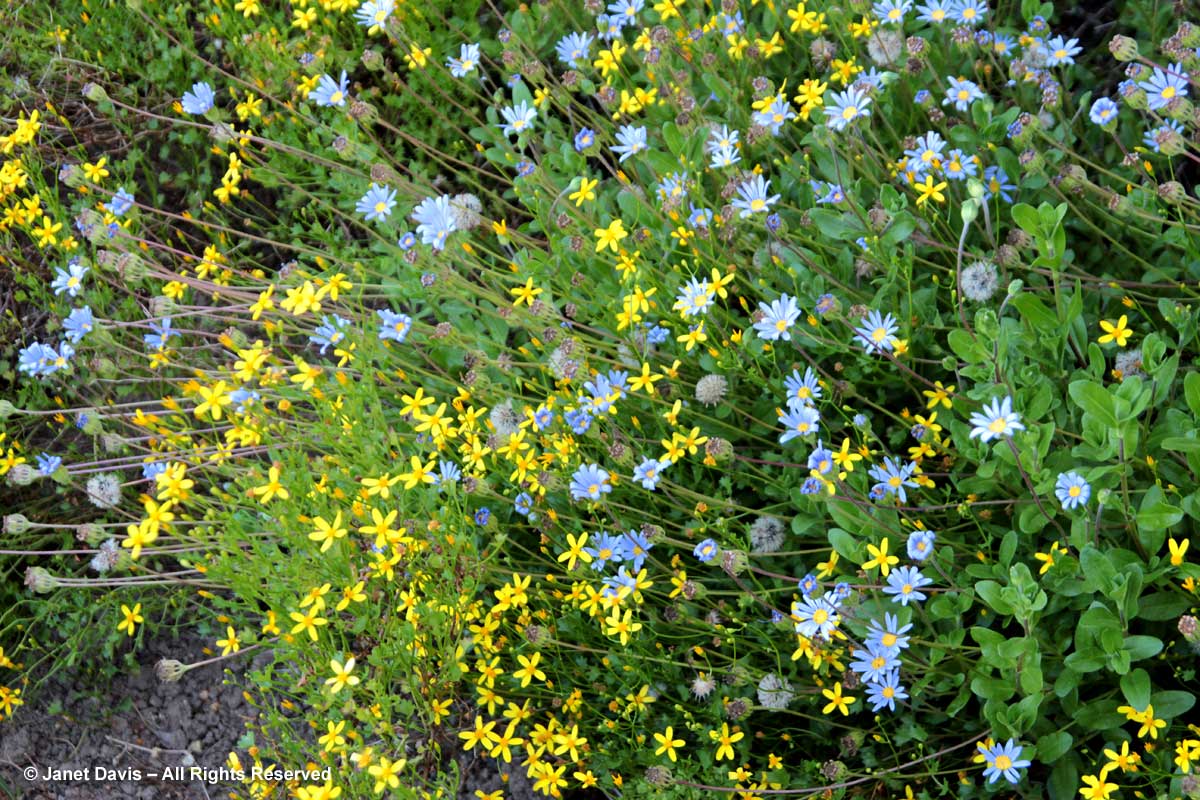
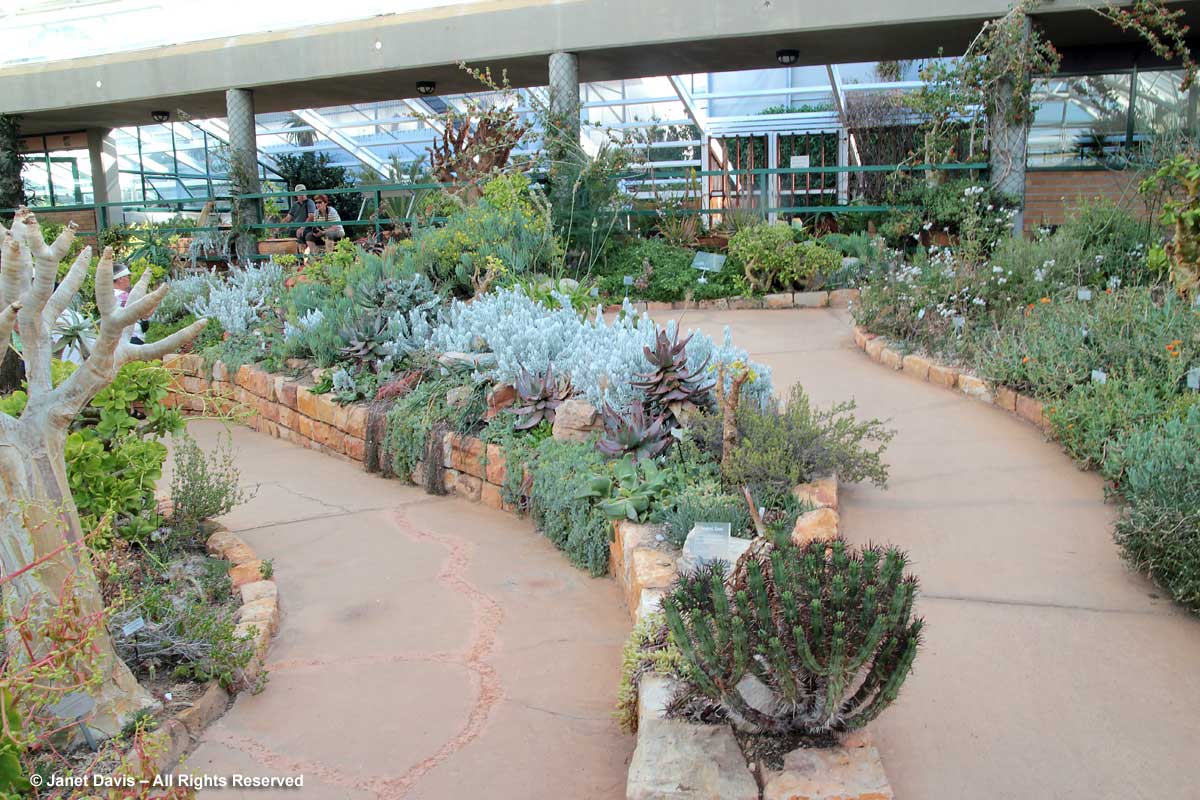
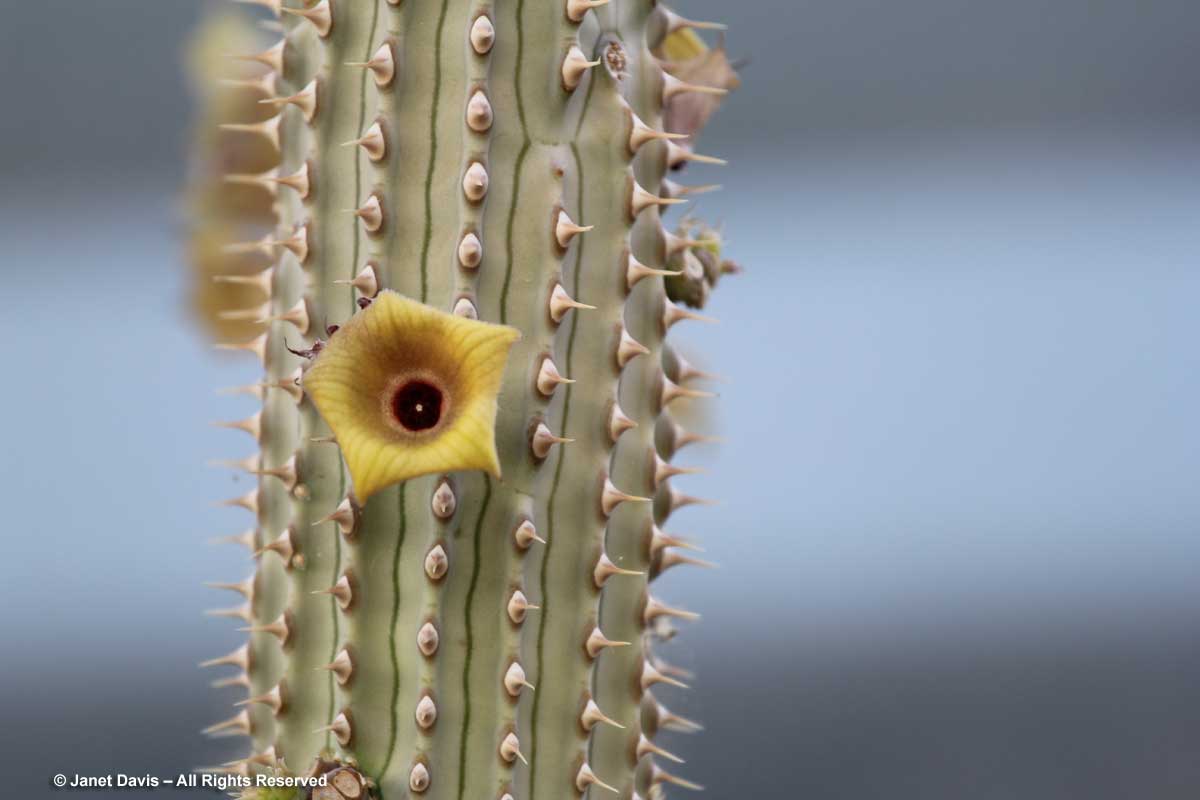
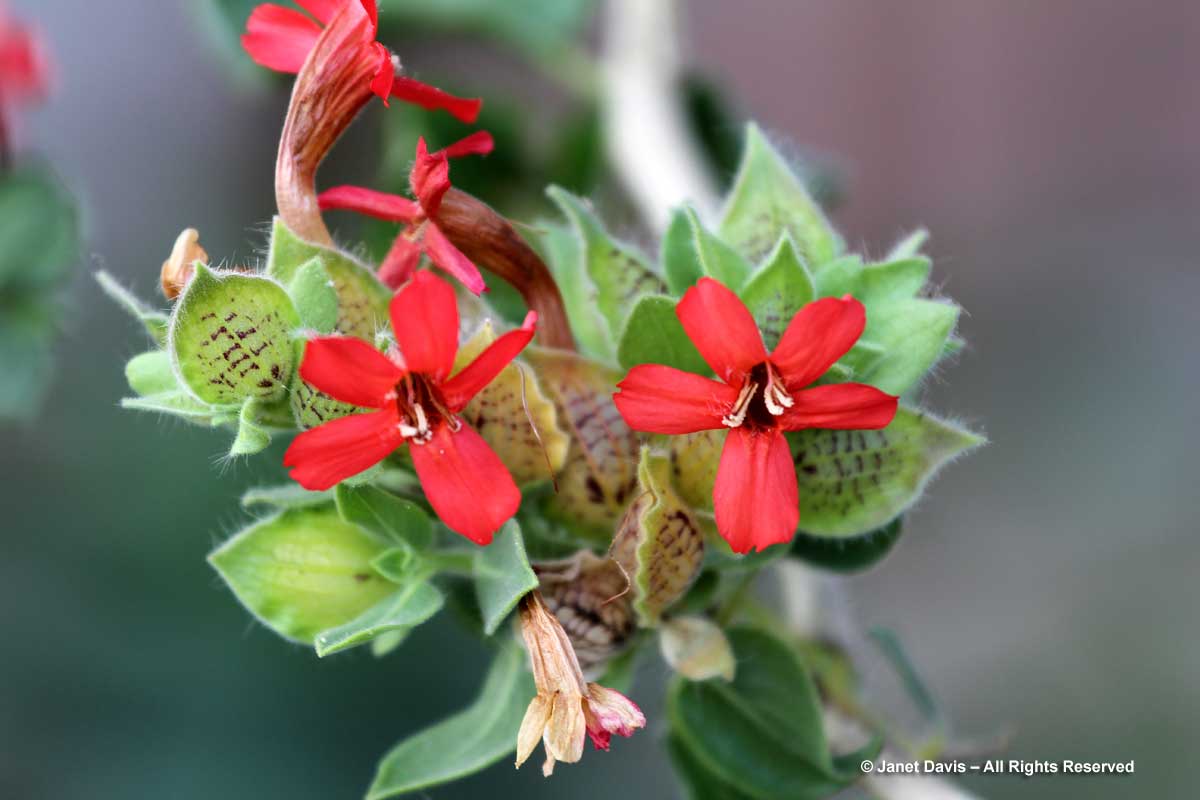
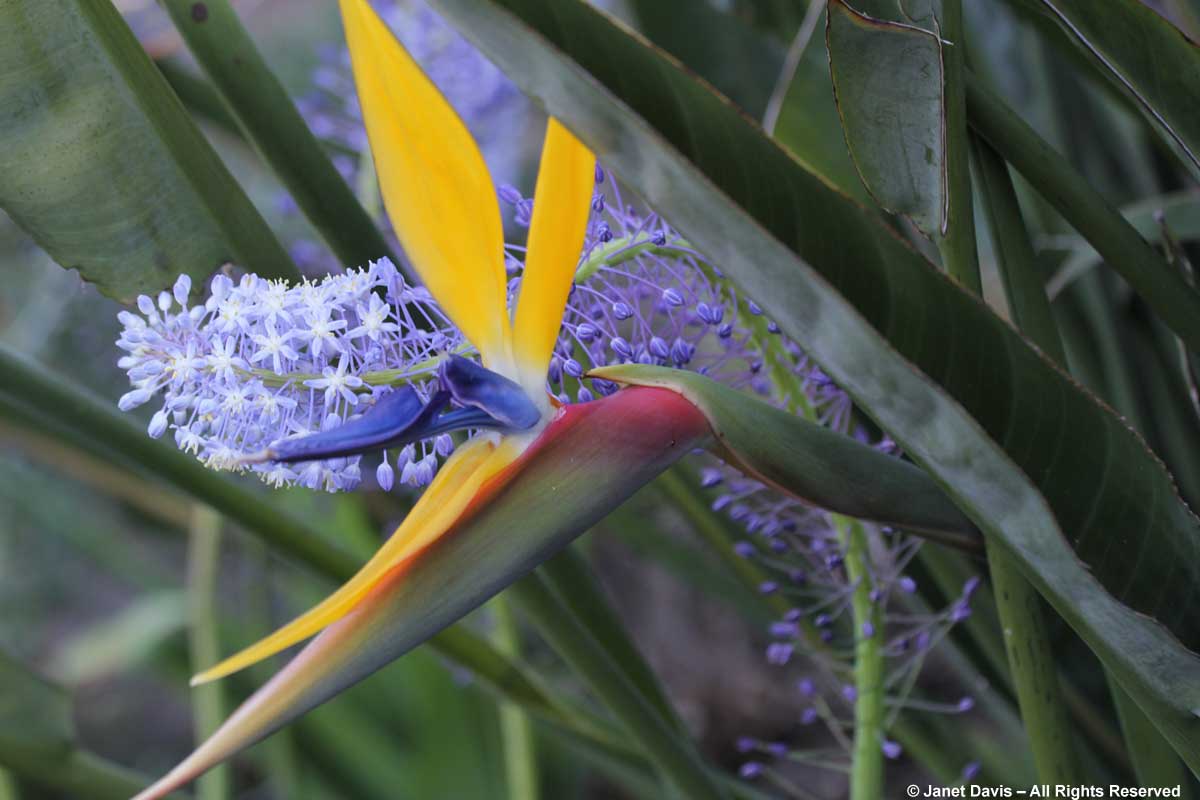
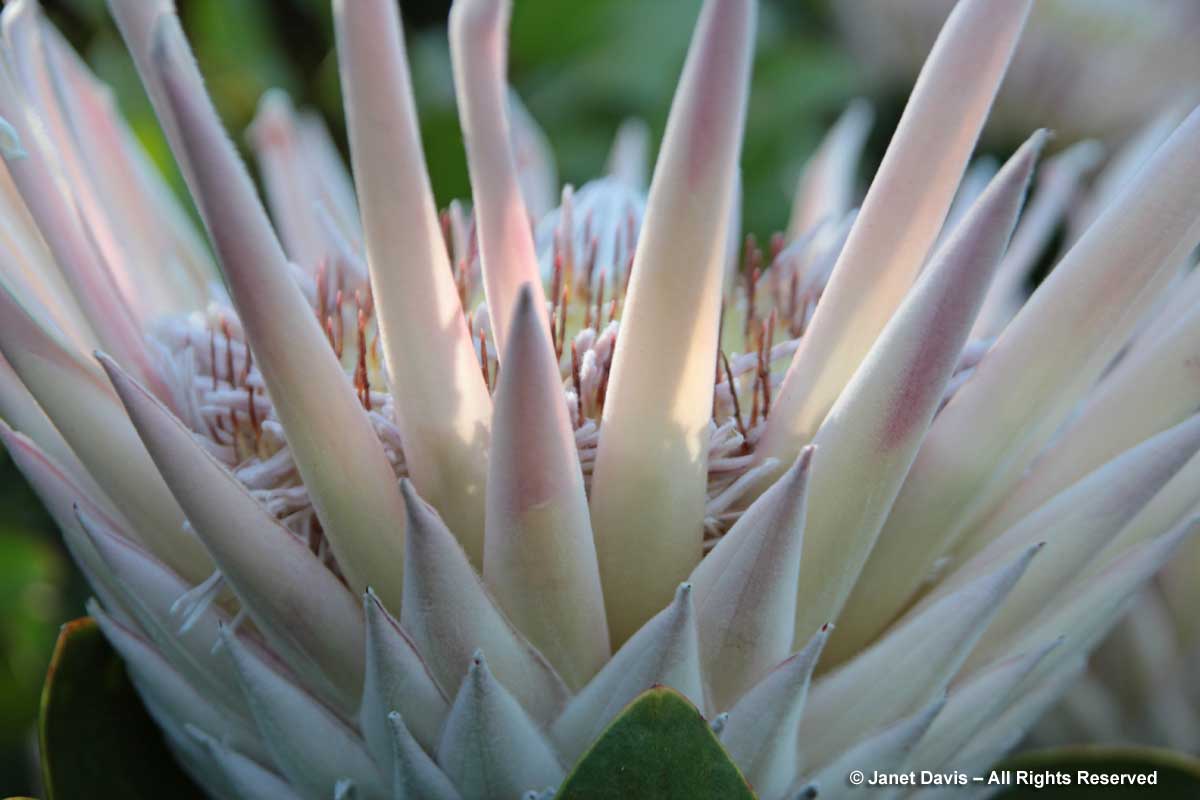
Beautifully written – thank you!
I will know we are ‘back to normal’ when that display at the entrance is flowers again, instead of a COVID apology notice.
Thank you Diana! Hopefully we’ll all be back to some semblance of normal soon…..